Bisc 102 - second half
1/128
There's no tags or description
Looks like no tags are added yet.
Name | Mastery | Learn | Test | Matching | Spaced |
|---|
No study sessions yet.
129 Terms
Evolution
how a single common ancestor gave rise to all organisms on Earth through natural selection and genetic variation over long periods of time.
MicroEvolution
Changes in the frequency of an allele within a single population.
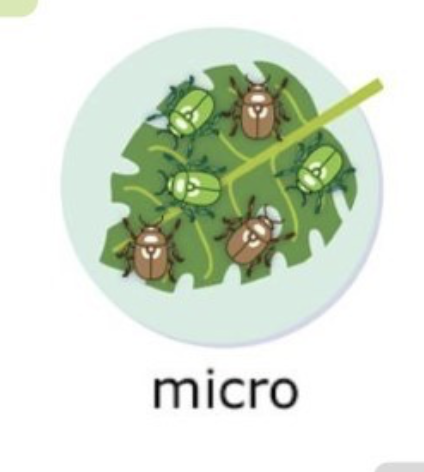
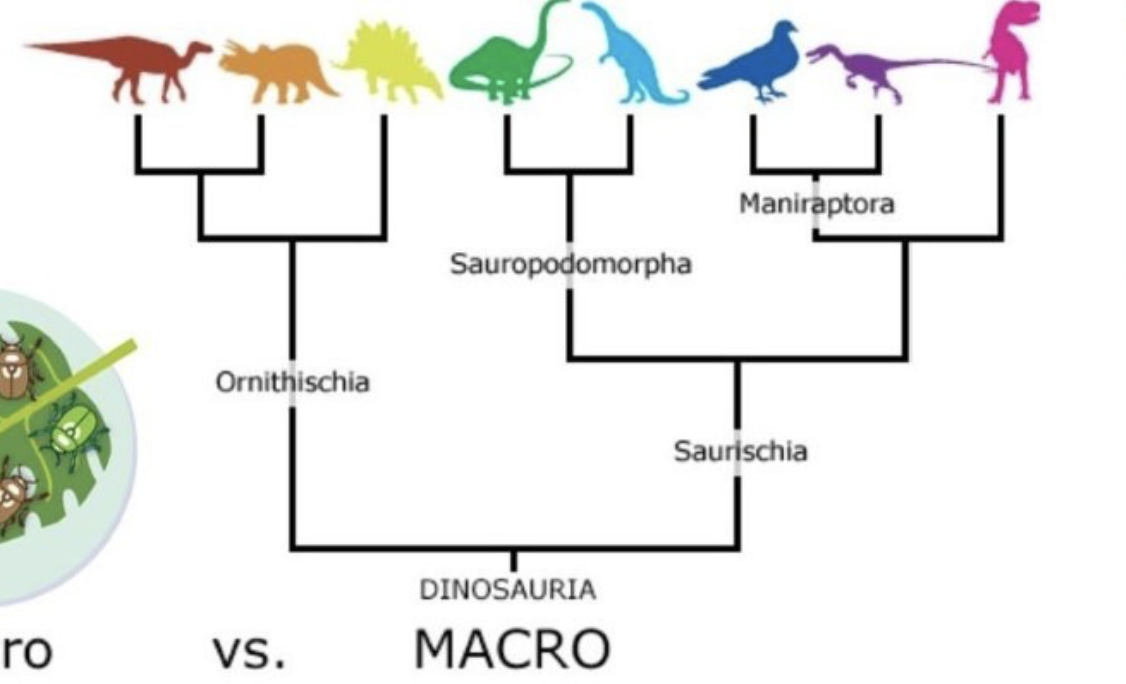
MacroEvolution
Major evolutionary changes that occur over long time scales, leading to the emergence of new species and broader taxonomic groups.
Population
a group of individuals of the same species living in the same geographic area at the same time.
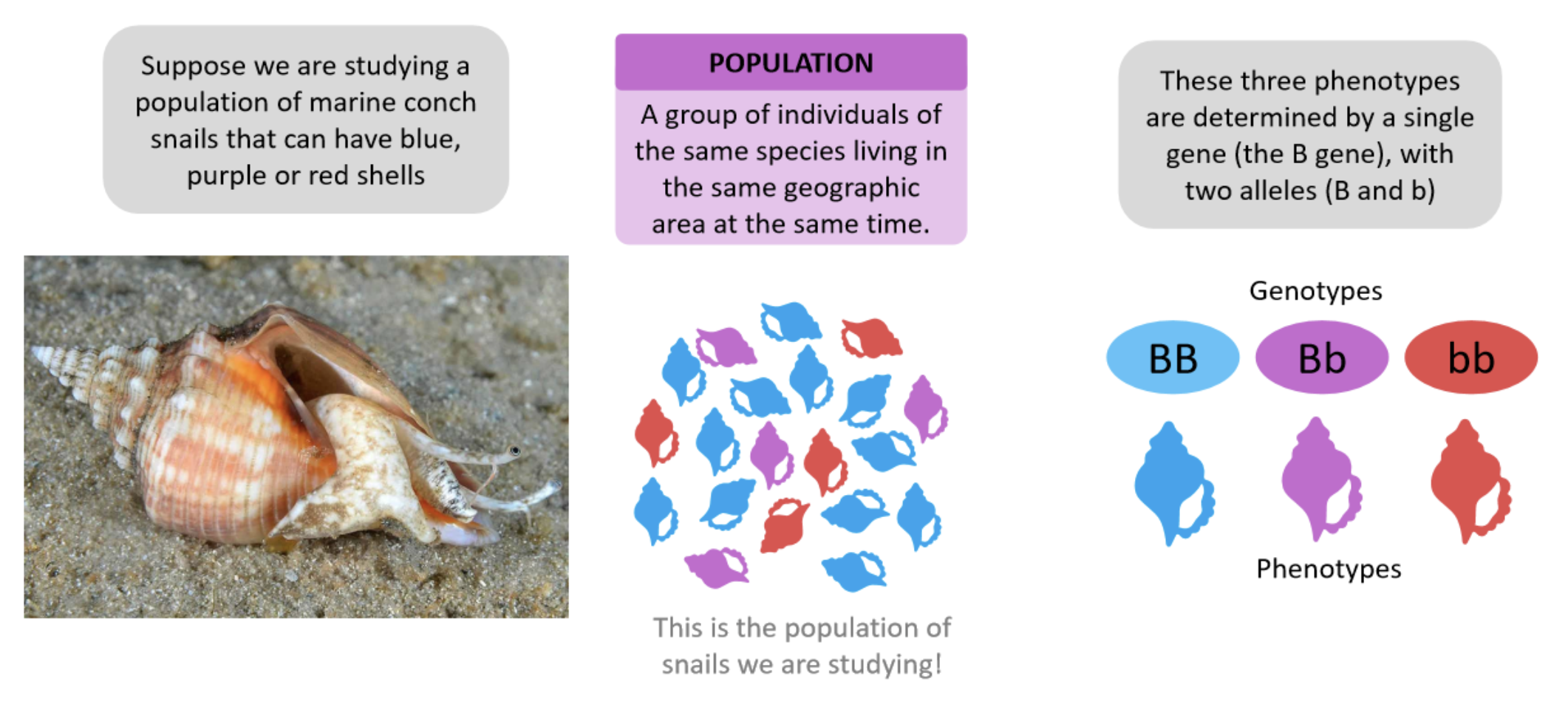
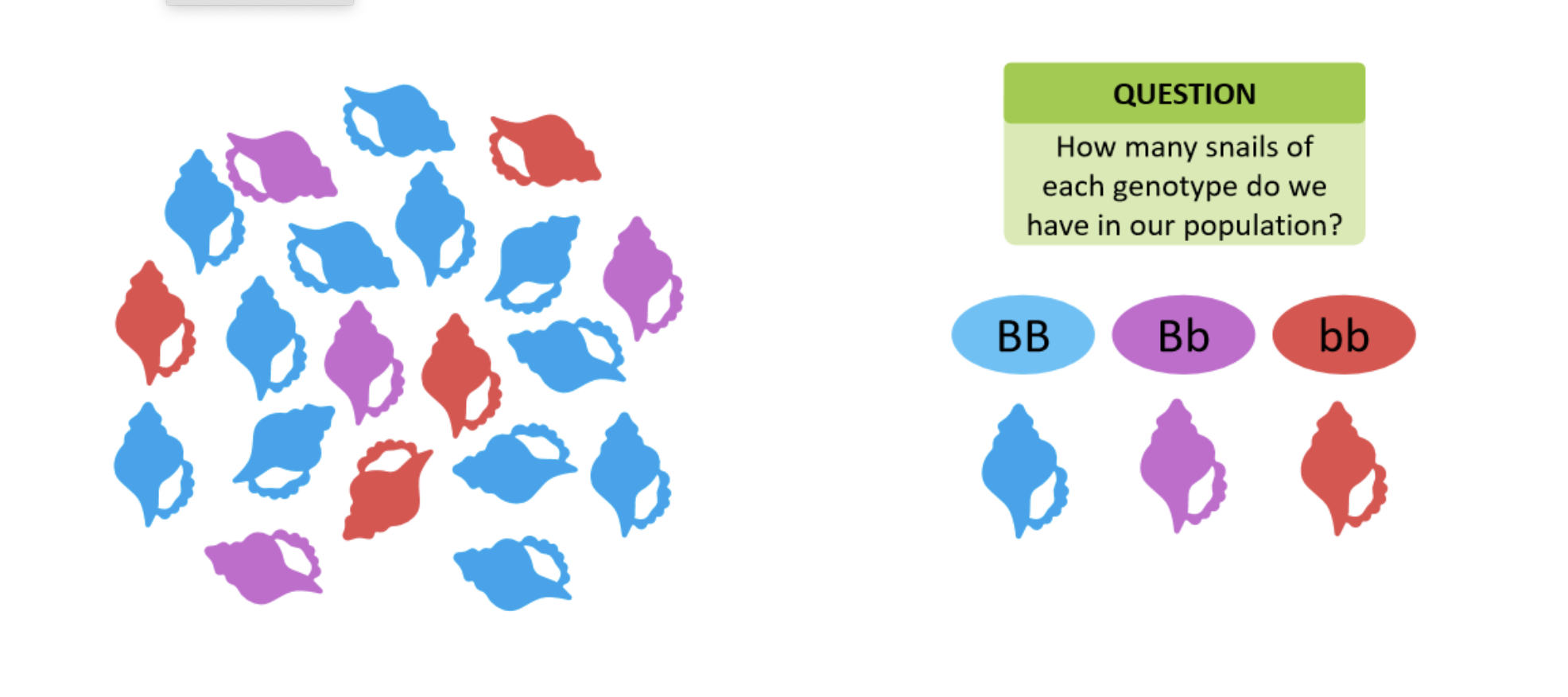
Question
BB; twelve (blue)
Bb; four (purple)
bb; four (red)
Genotype frequency
the proportion of a single genotype within a population.
a number between 0 to 1
EQ’N: # individuals w/ genotype / # total Individuals
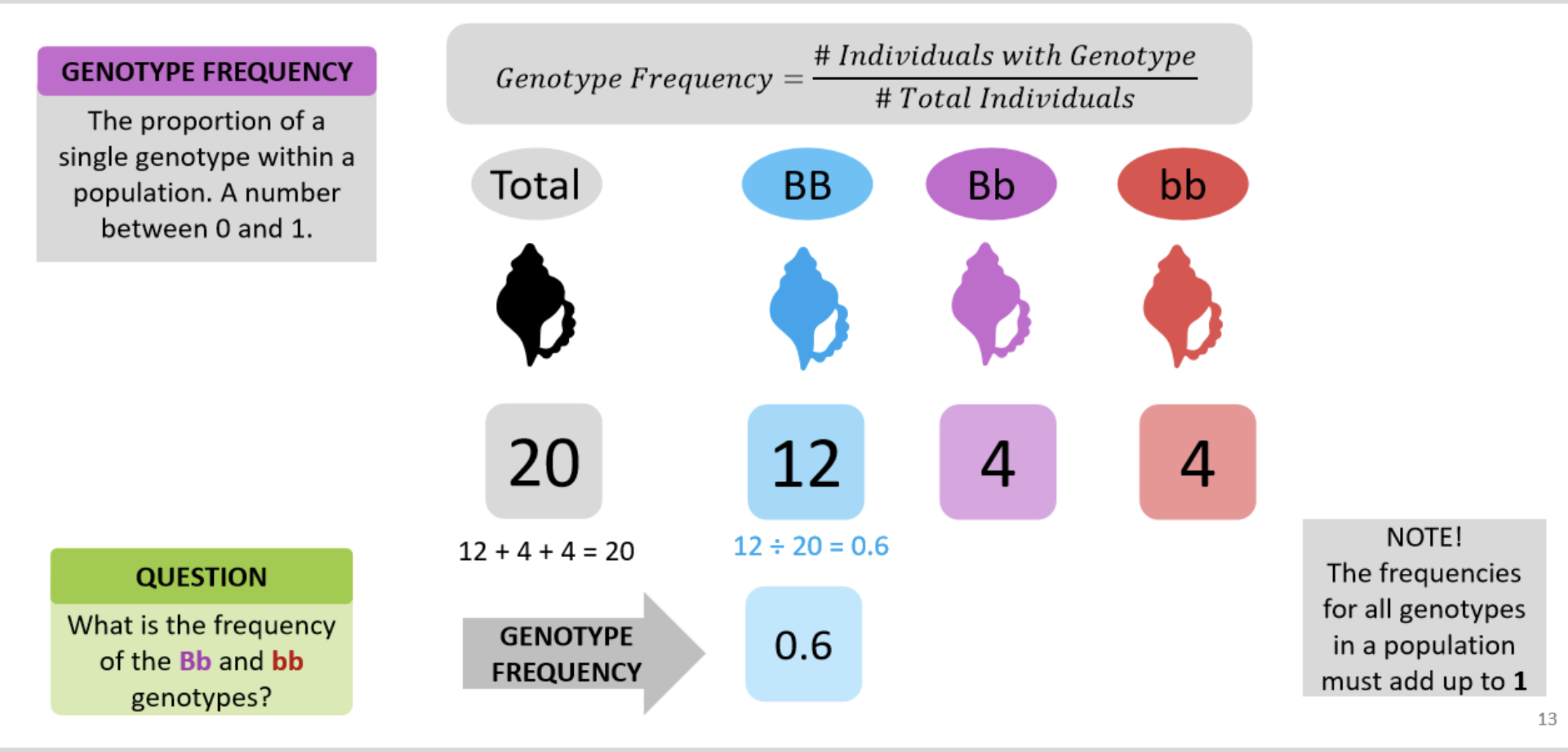
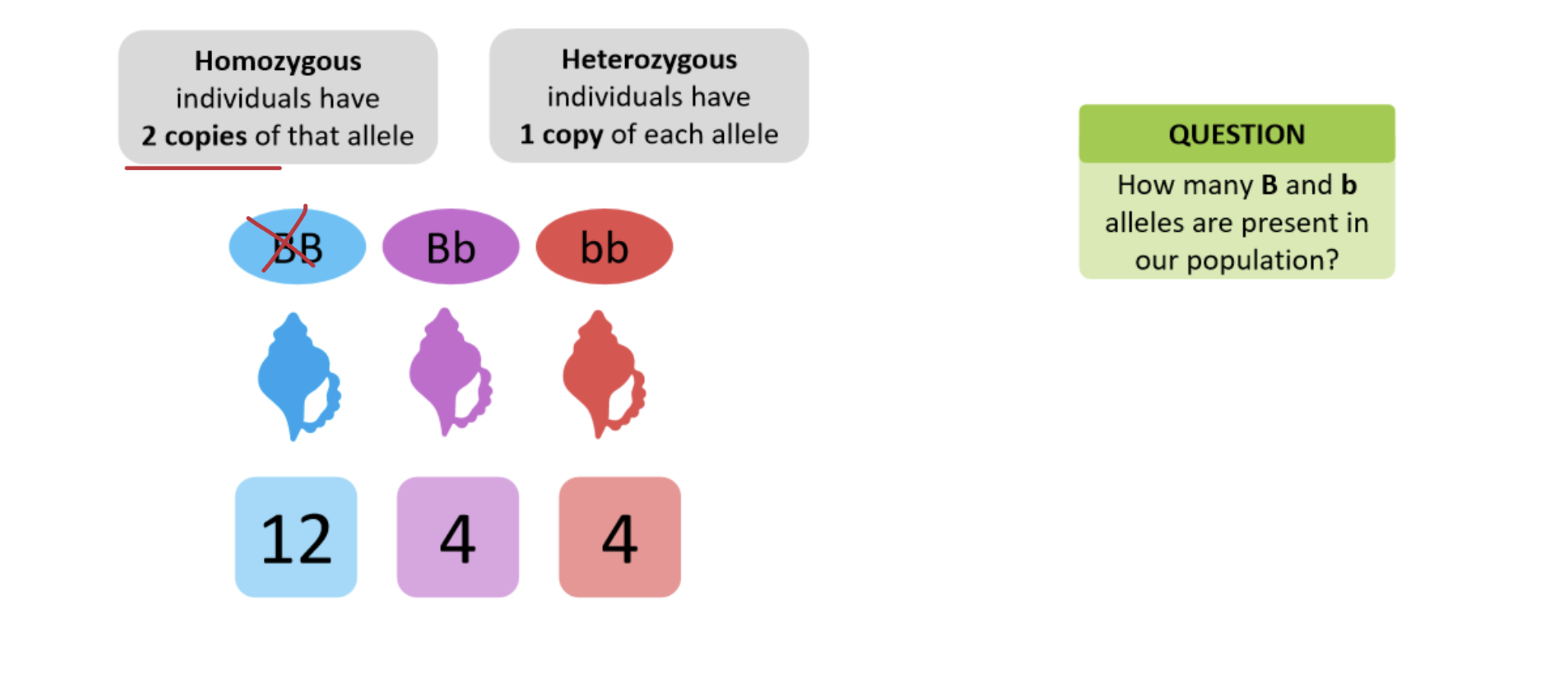
How many B and b alleles are present in our population as a whole?
ANS
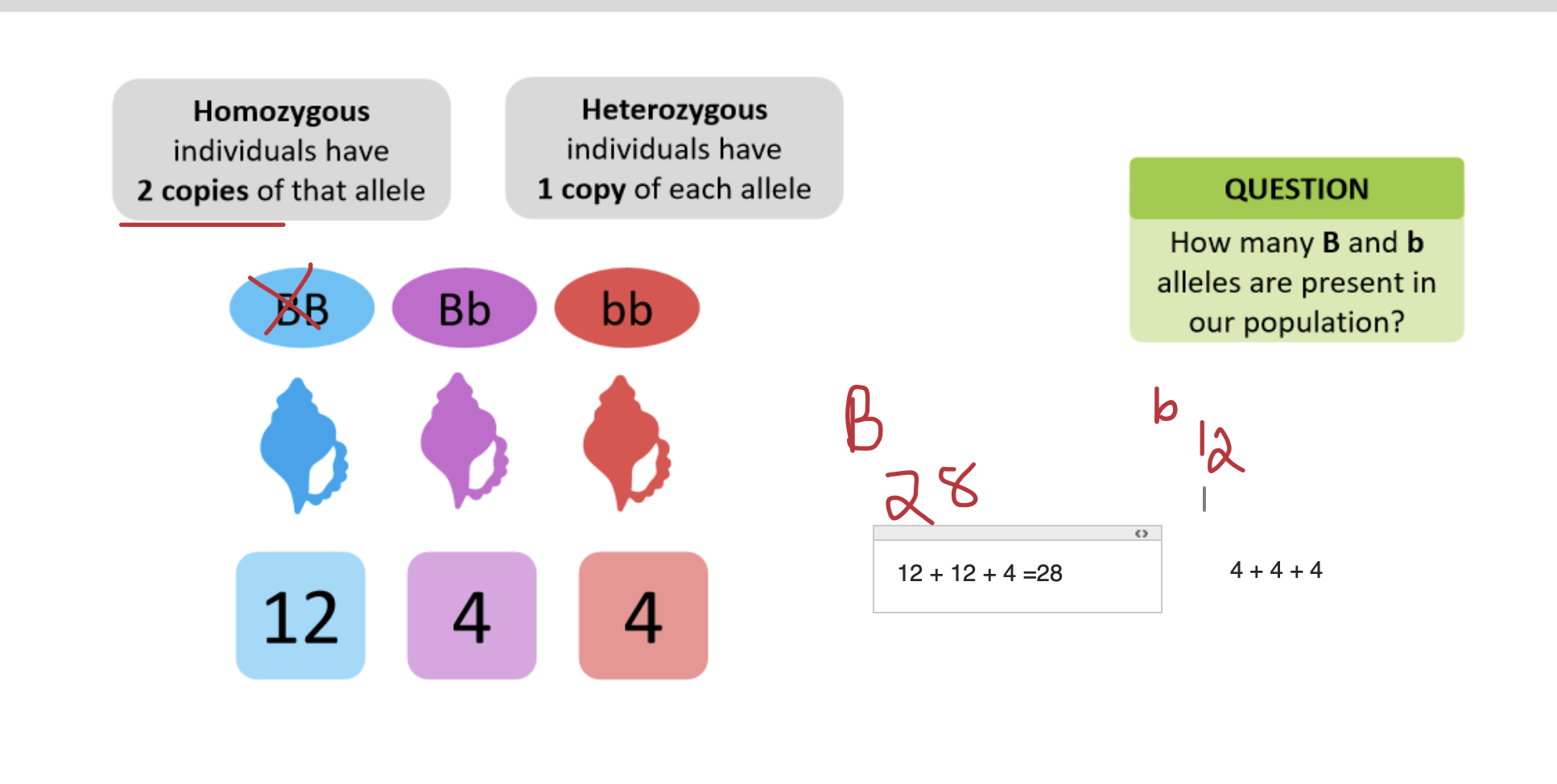
Allele frequency
The proportion of a single allele within a population.
number between 0 and 1
Calculated using the formula: # of copies of allele / # total alleles
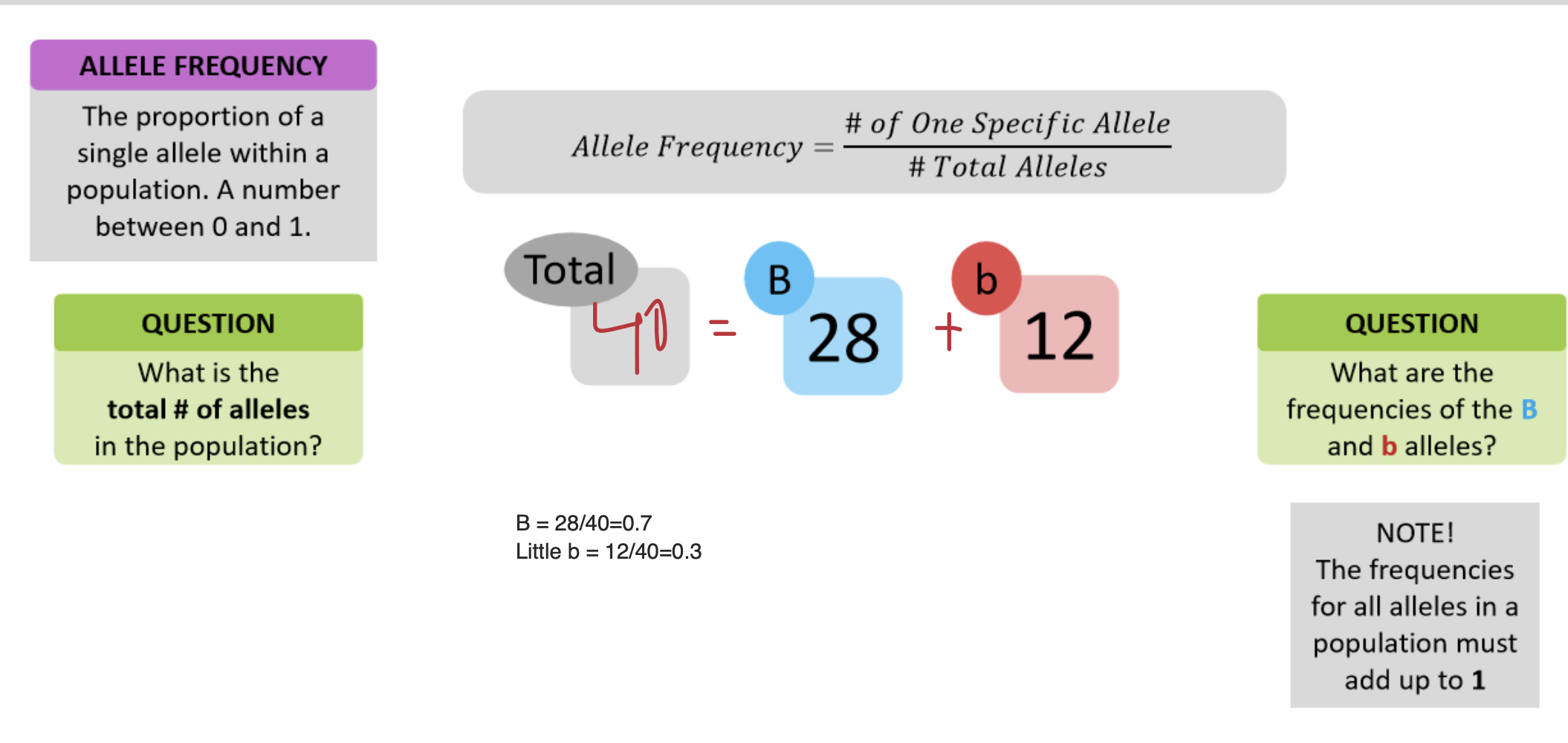
Gene pool
The set of all genes in a population, pooled together.
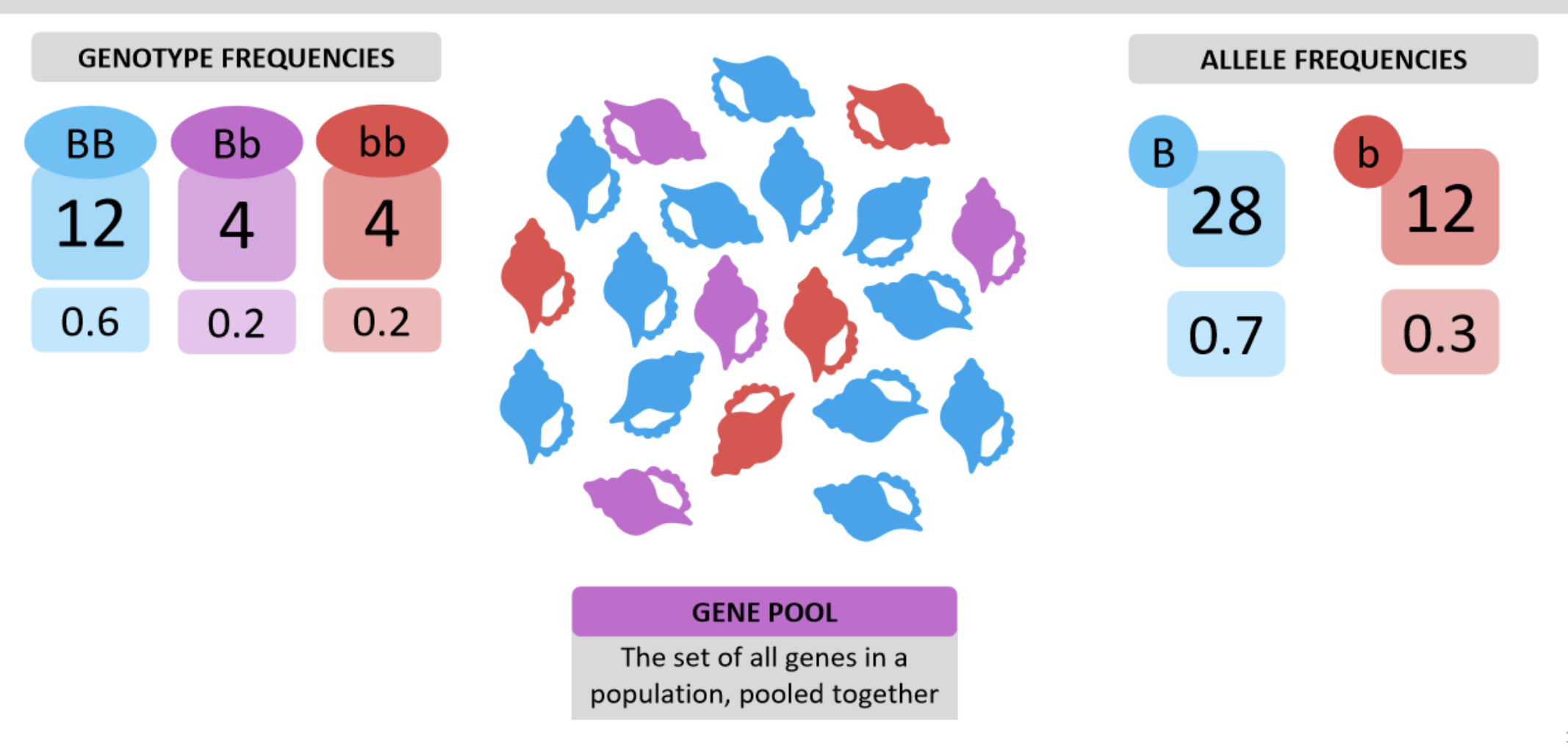
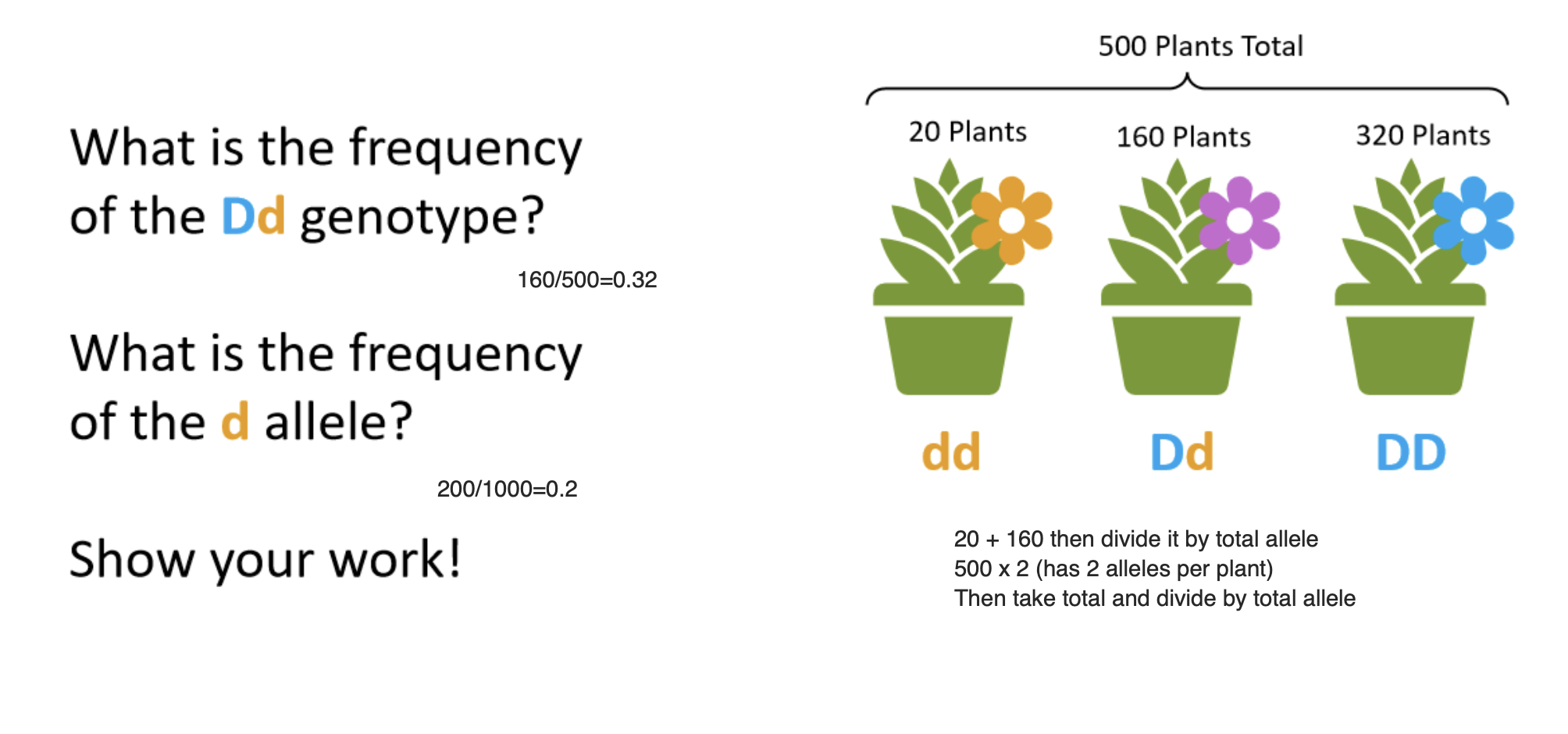
Practice Q’s and
ans
Hardy-Weinberg Equilibrium
In the absence of evolutionary processes, the allele frequencies in a large population DO NOT change from generation to generation.
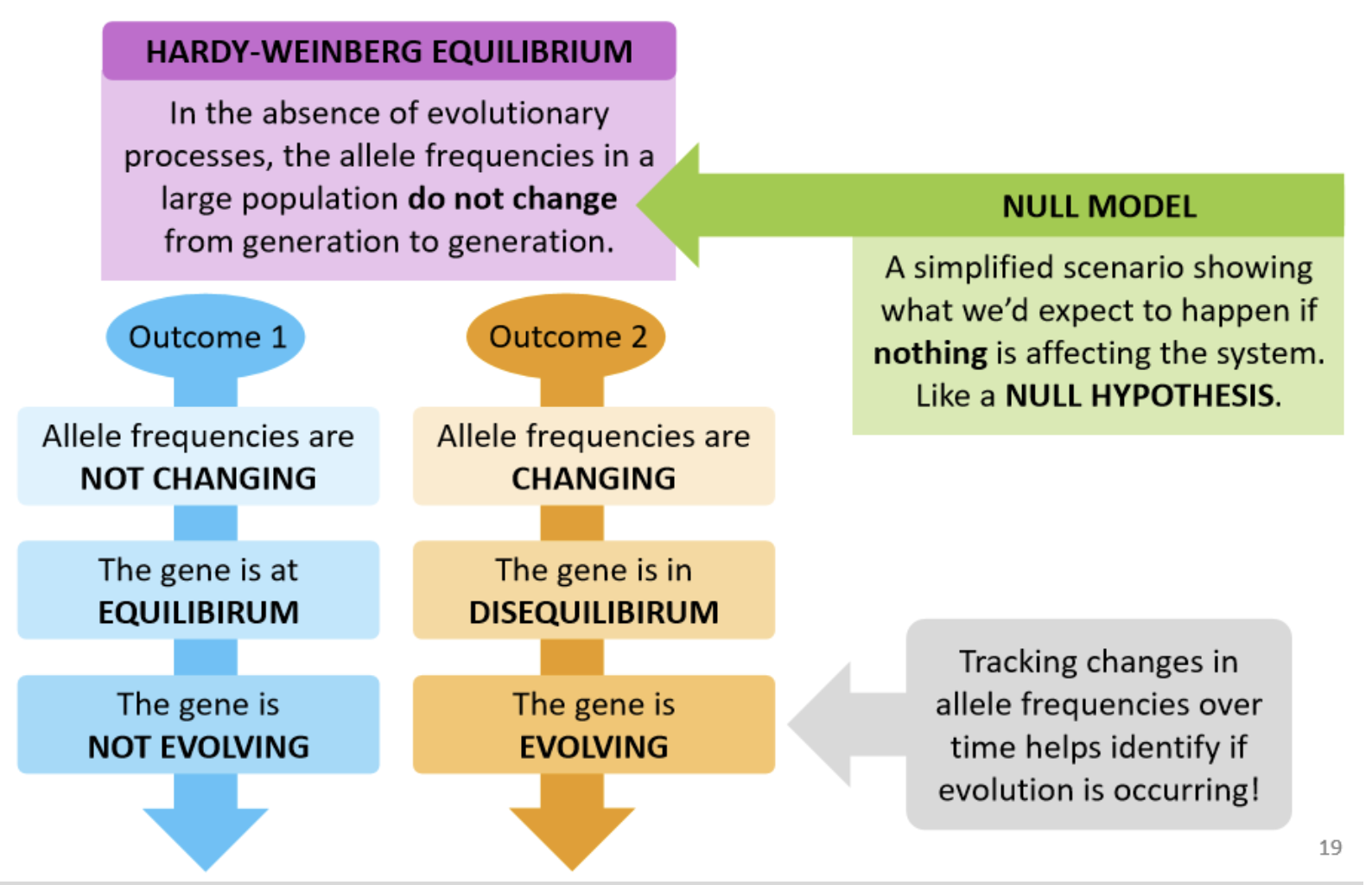
null model
a simplified scenario showing what we’d expect to happen if NOTHING is affecting the system; like NULL hypothesis.
Which conditions need to be met for allele frequencies to NOT change?
(evolutionary principles)
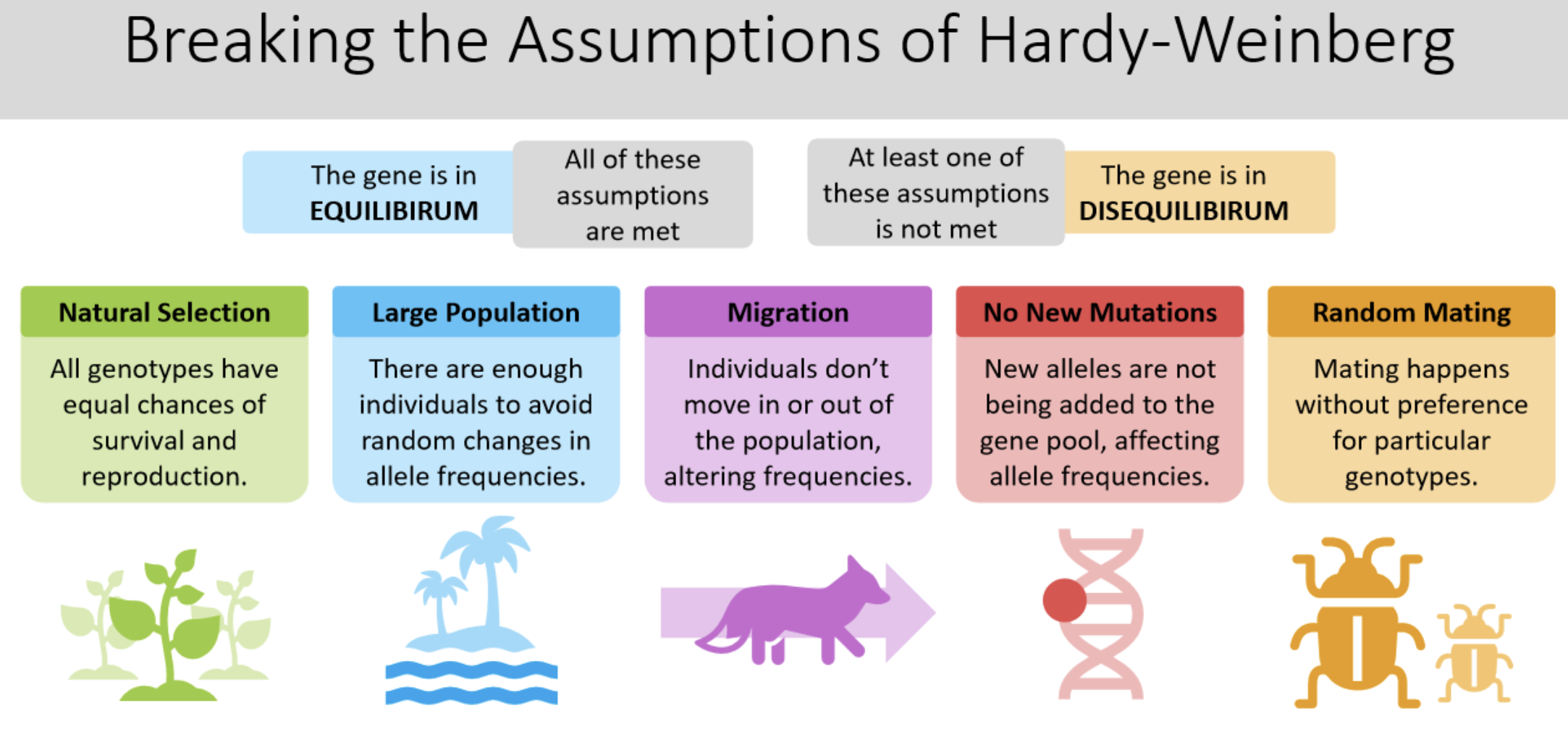
What are the evolutionary methods?
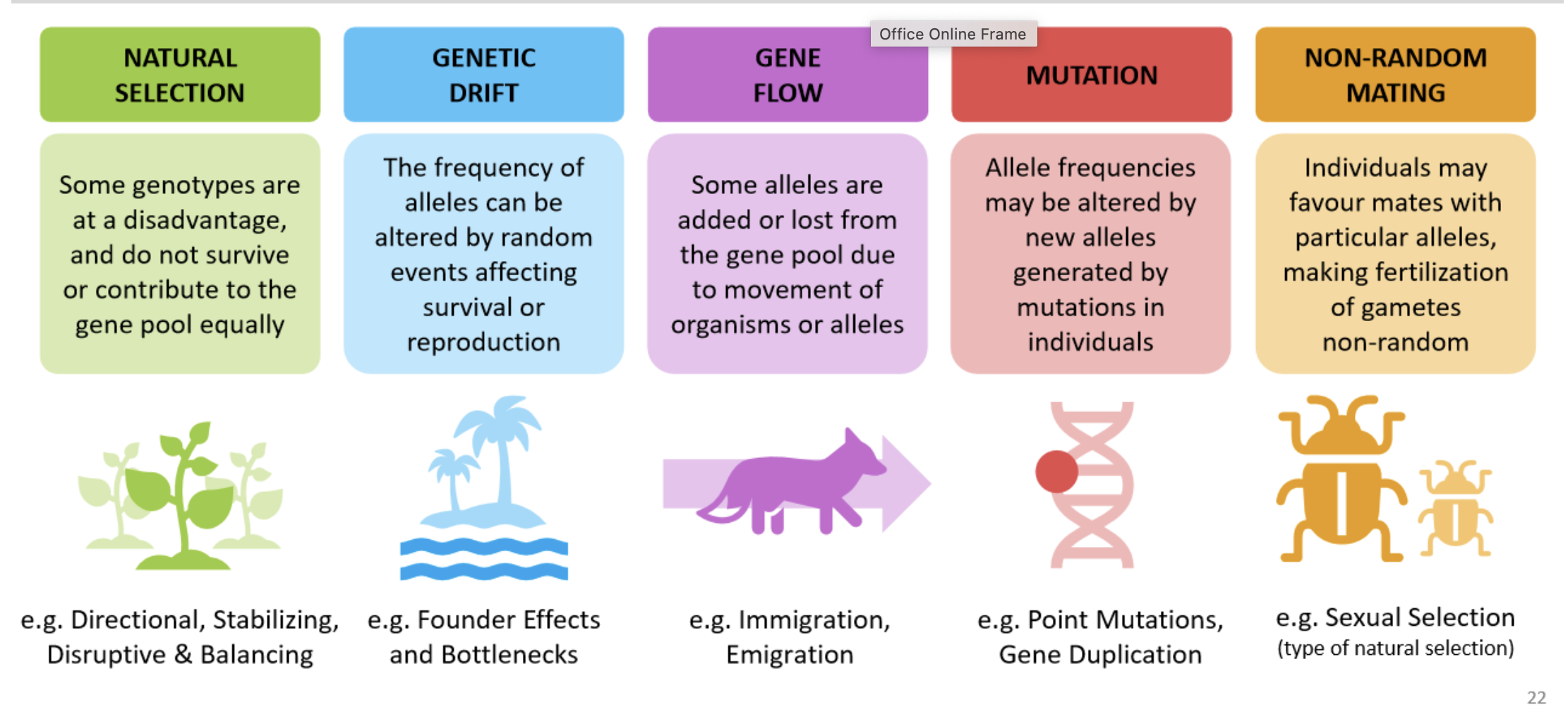
natural selection
(evolutionary method)
directional selection
stabilizing selection
disruptive selection
balancing selection
directional selection
(natural selection)
one extreme phenotype provides a fitness benefit, so the average phenotype in the population moves toward that extreme
peppered moth during the Industrial Revolution
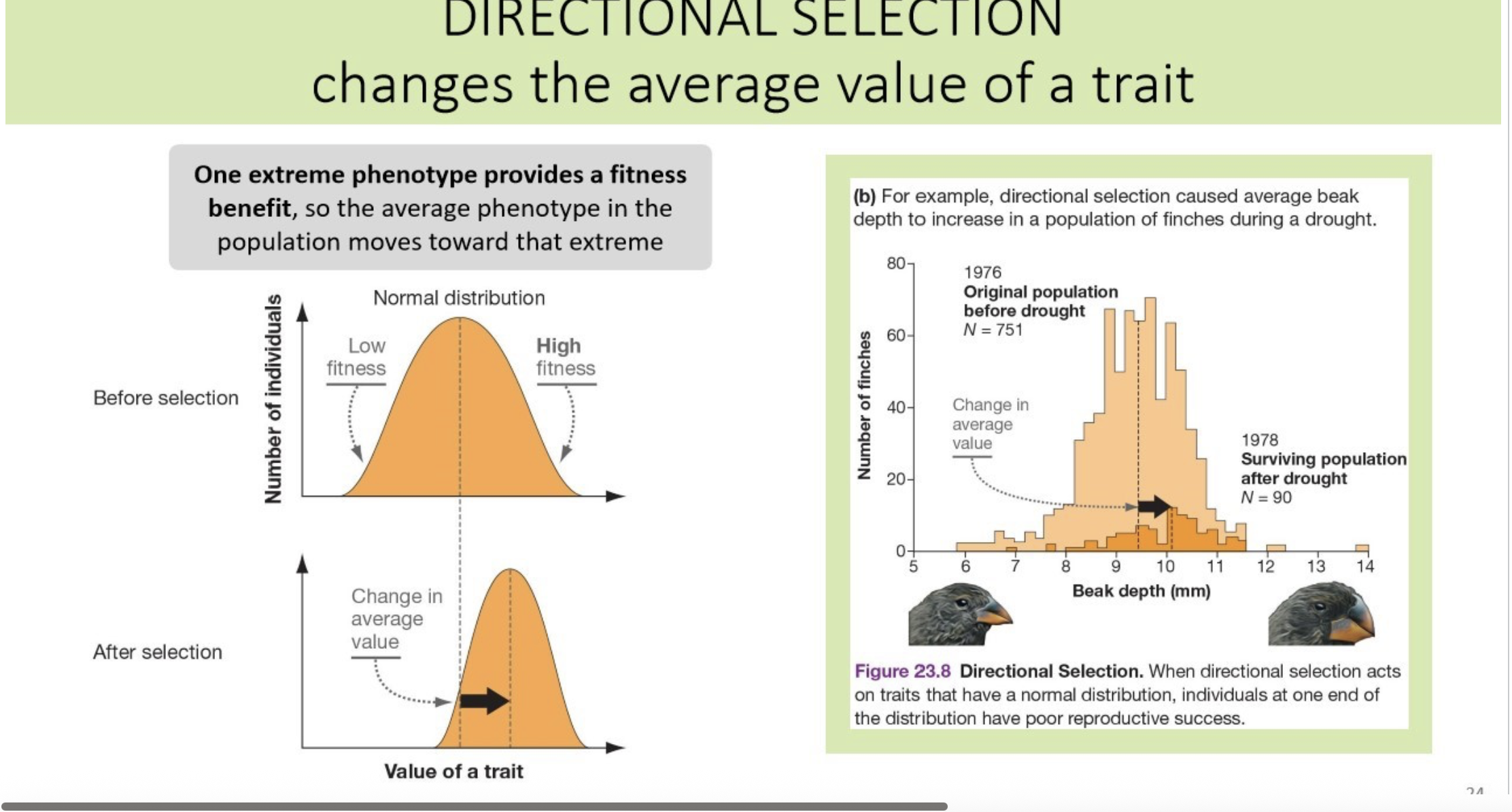
stabilizing selection
(natural selection)
Phenotypes in the middle of the range provide a fitness benefit, so extreme phenotypes become less common
human birth weight, where babies with average weight have higher survival rates than those with very low or very high weights
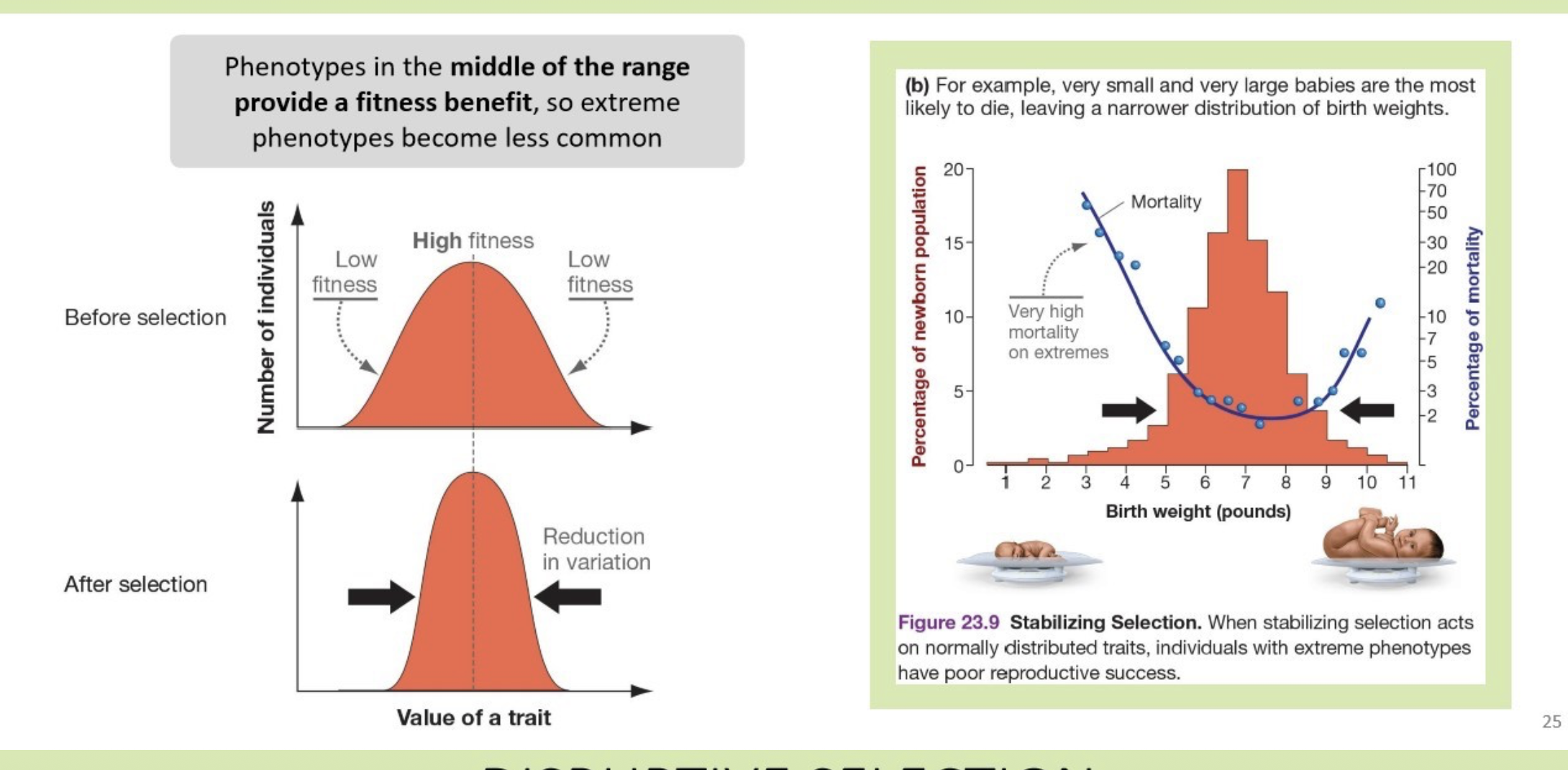
disruptive selection
(natural selection)
Phenotypes of both extremes provide a fitness benefit, so intermediate phenotypes become less common
Darwin's Finches:
On some Galapagos Islands, finches with both very large and very small beak sizes are more successful at foraging for food than those with intermediate-sized beaks.
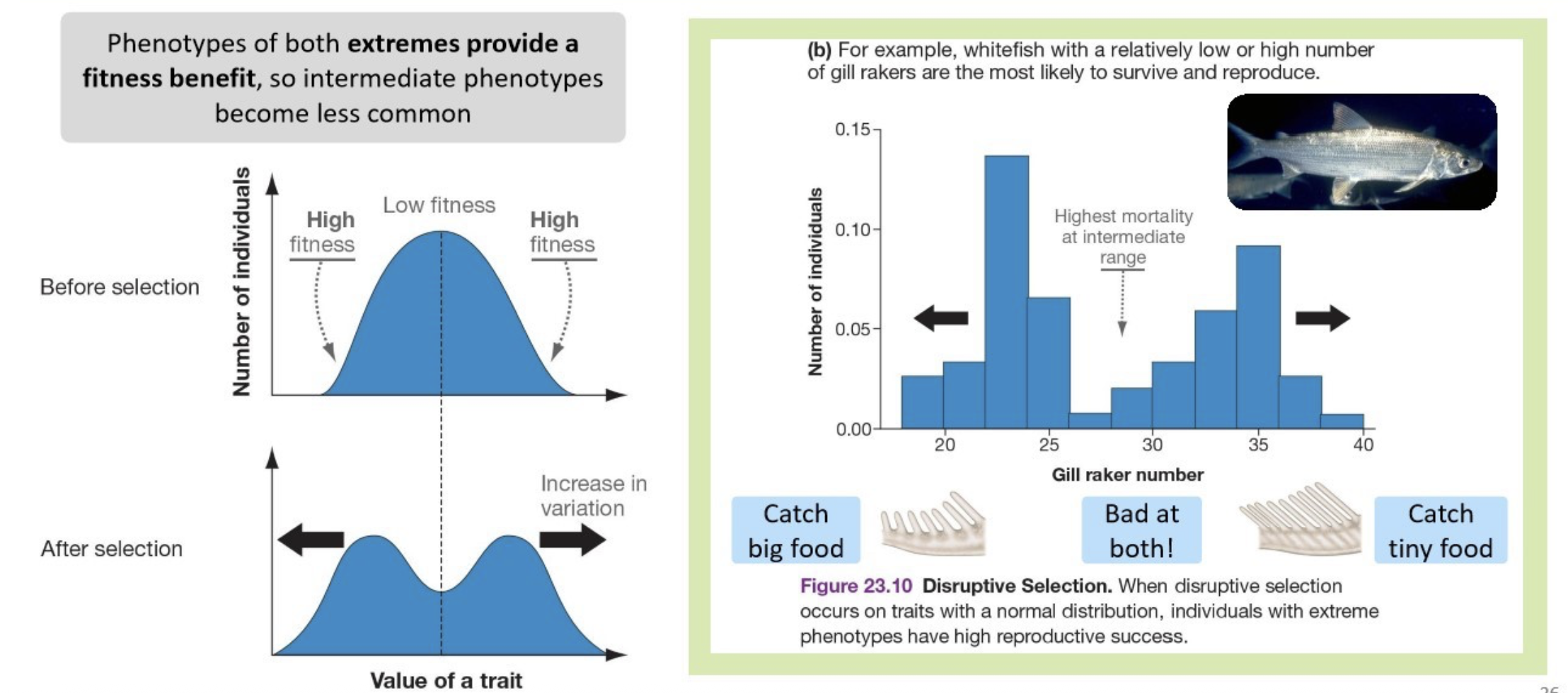
Balancing selection
no single phenotype is favoured at all times, so a diversity of phenotypes are always maintained in the population.
Males and females in a population with an X/Y sex chromosome system
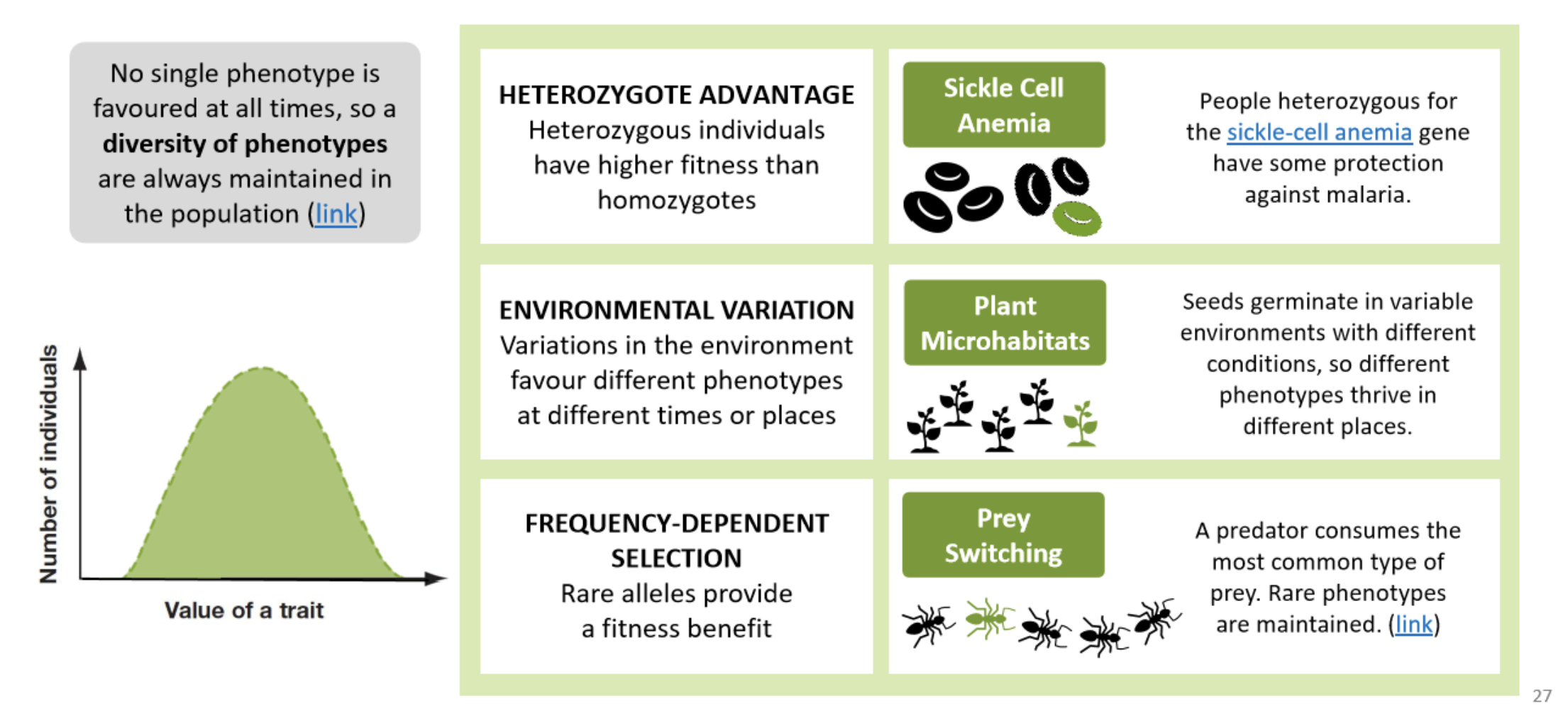
Genetic drift
(evolutionary method)
the frequency of alleles can be altered by random events affecting survival or reproduction
occurs when..
ramdom chance changes alleles frequencies
founder effect
genetic bottleneck
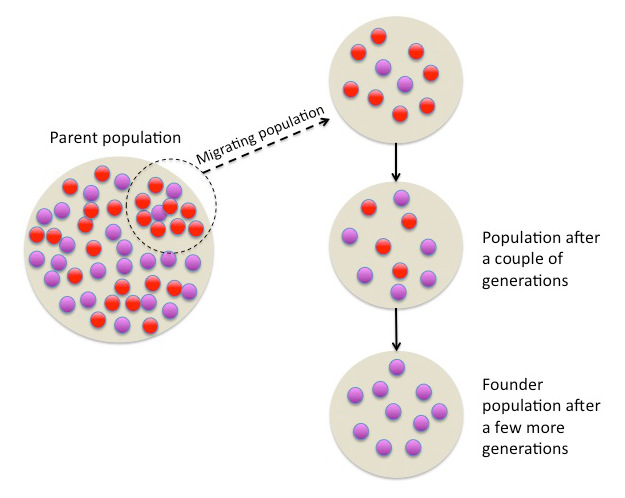
random chance changes alleles frequencies
(genetic drift)
occurs due to random events that impact which individuals survive and reproduce in a population, leading to shifts in allele frequencies that are not adaptive.
like car accidents or natural disasters that randomly affect specific individuals, leading to unexpected changes in the genetic makeup of populations.
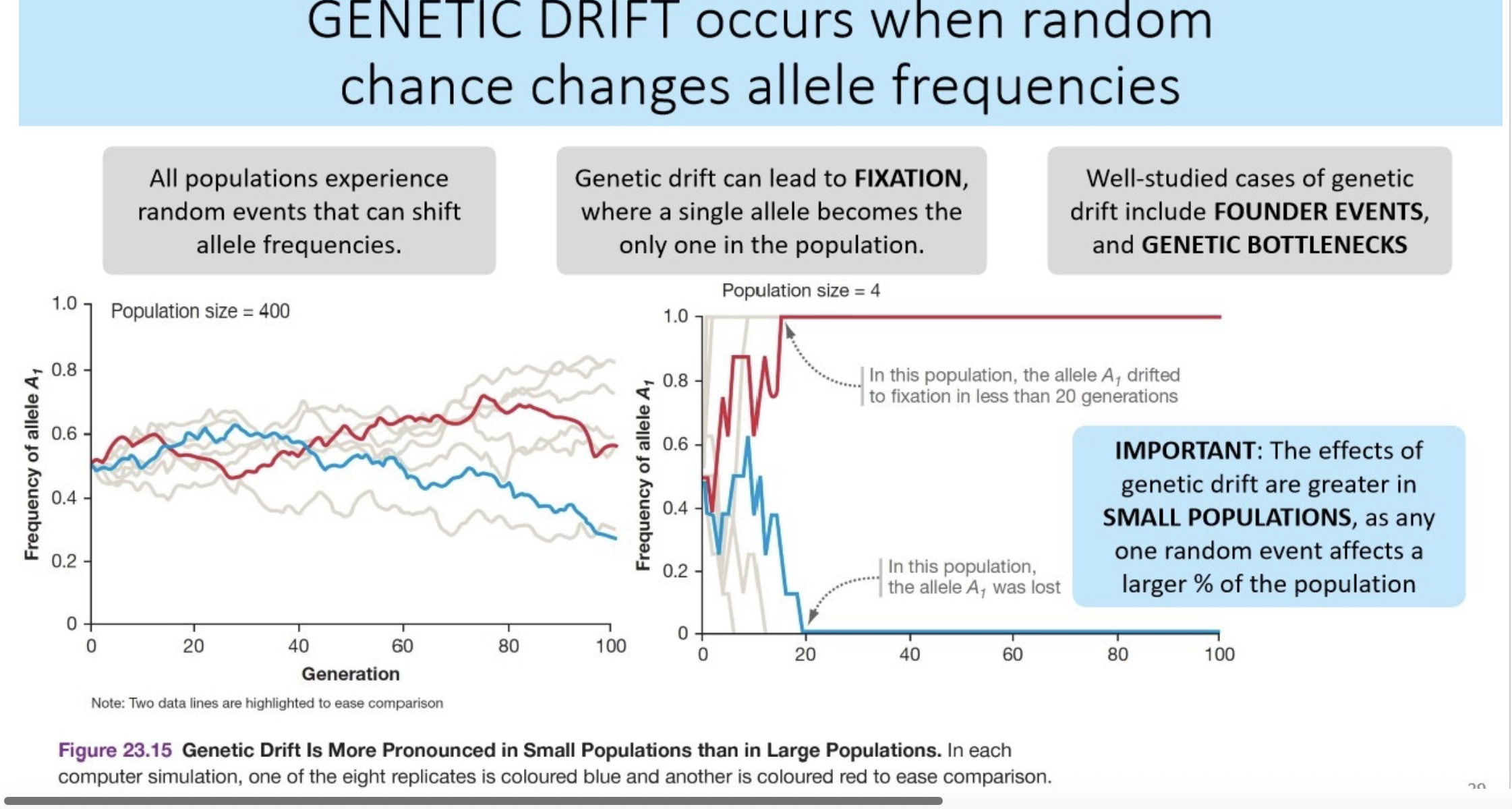
founder effect
(genetic drift)
When a new population is founded, the allele frequencies will change based on the random immigration of individuals to form the new population.
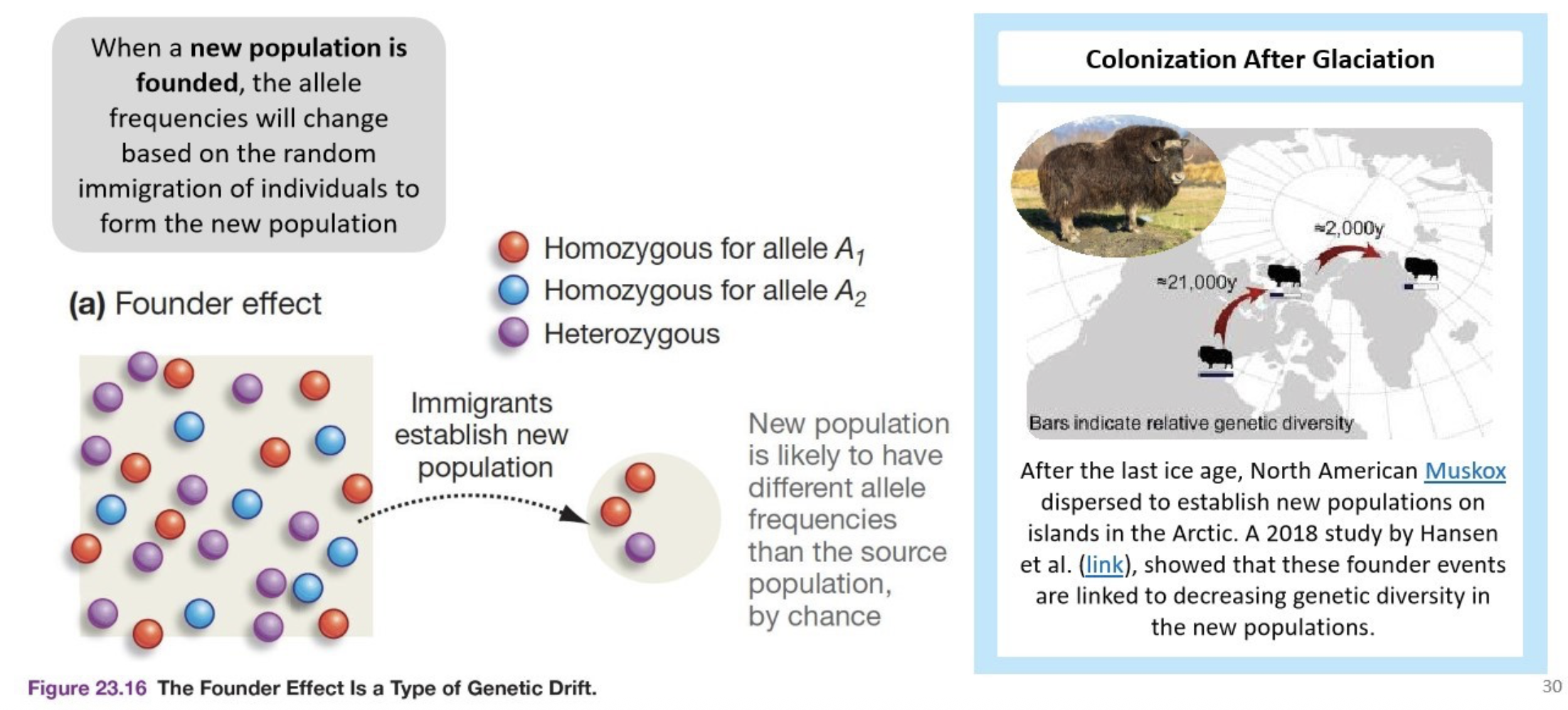
Genetic bottleneck
a sharp reduction in population size randomly removes individuals from the population, and the remaining individuals have a different allele frequency.
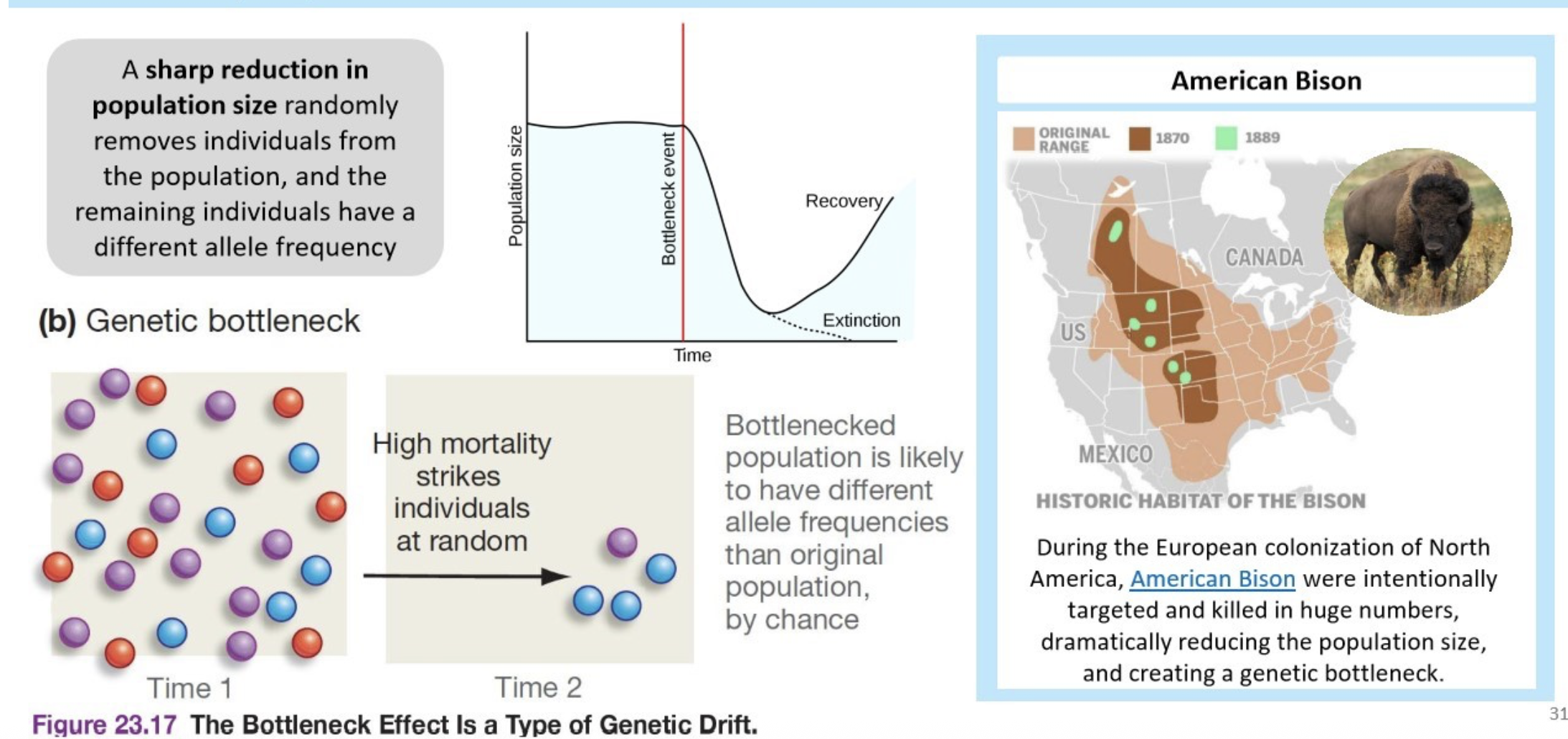
Gene flow
(evolutionary method)
some alleles are added or lost from the gene pool due to movement of organisms or alleles.
(immigration or emigration)
occurs when…
alleles move between populations
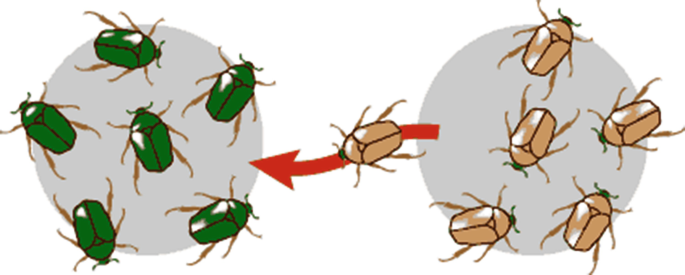
alleles moving between population
(Gene flow)
gene flow increases the similarity in allele frequency between the two populations. With enough gene flow, the allele frequencies will become identical.
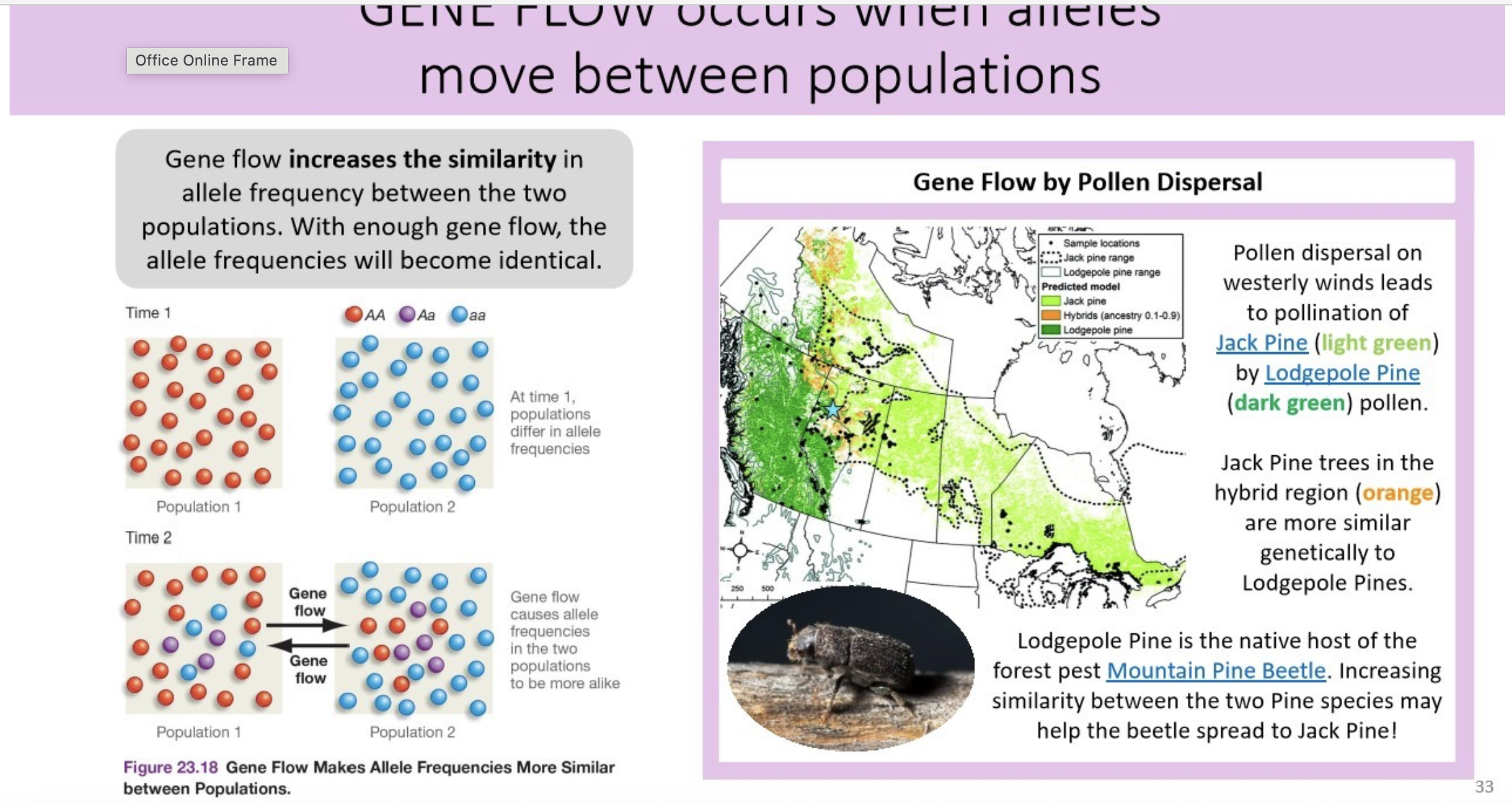
Mutation
(evolutionary method)
allele frequencies may be altered by new alleles generated by mutation in individuals.
produce new alleles, increasing genetic variation in population
Mutations increase the genetic variation in population, how?
mutations occur when DNA of organism is permanently changed → happens randomly; usually harmless or no effect (3 thumbs)
in combination with evolutionary mechanisms like selection or genetic drift IT MAY HAVE A BIG EFFECT

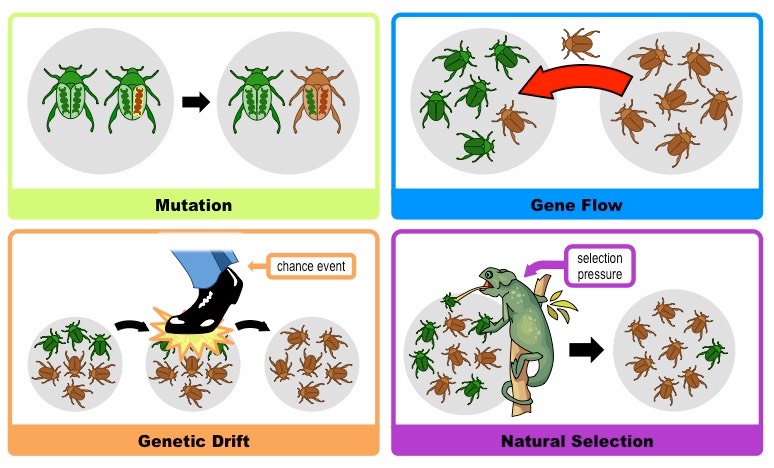
adaptive evolution
evolution that results in a BETTER FIT between individuals and their environment
non-adaptive evolution
evolution that has random effects on fitness. individuals are not better adapted.
prosimians
small, tree dwelling, and nocturnal
“before monkeys”
arthropoids
primates that include monkeys and apes, characterized by larger body size and greater social complexity.
Summary table of # evolutionary processes
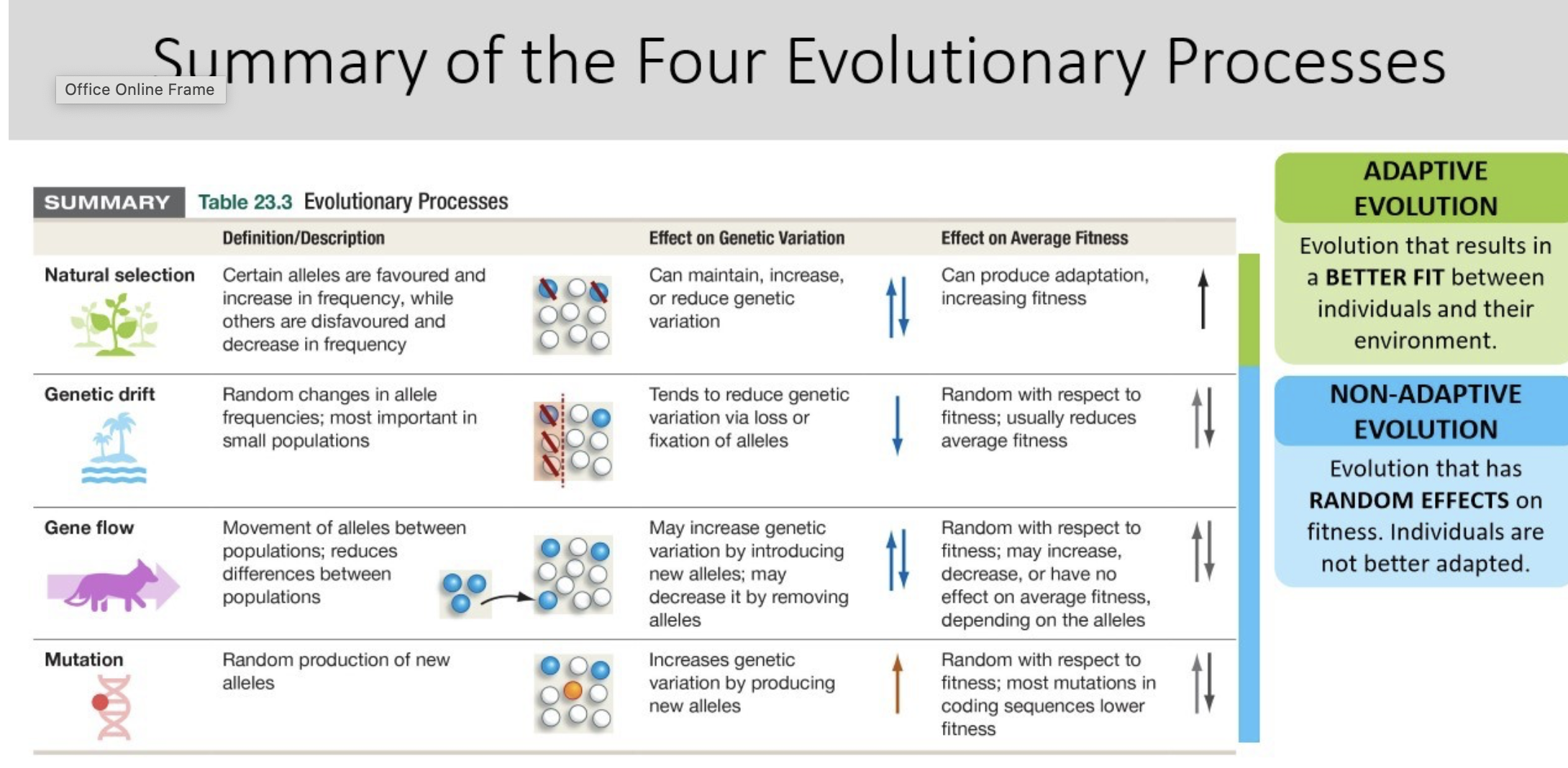
Biological species
species are reproductively isolated from others. interbreeding individuals do not produce viable, fertile offspring
ex: dogs can reproduce therefore considered one species; foxes & dogs can’t therefore = diff species
pre-zygotes barriers
prevents sperm and egg from meeting (pre-zygote)
temporal; incompatible timing
mechanical; incompatible structures
behaviour; incompatible courtship
habitat; incompatible habitats
gametic; incompatible sperm and egg
post-zygotes barriers
reduced fitness of hybrid
hybrid variability; hybrids don’t survive
hybrid sterility; hybrids can’t reproduce
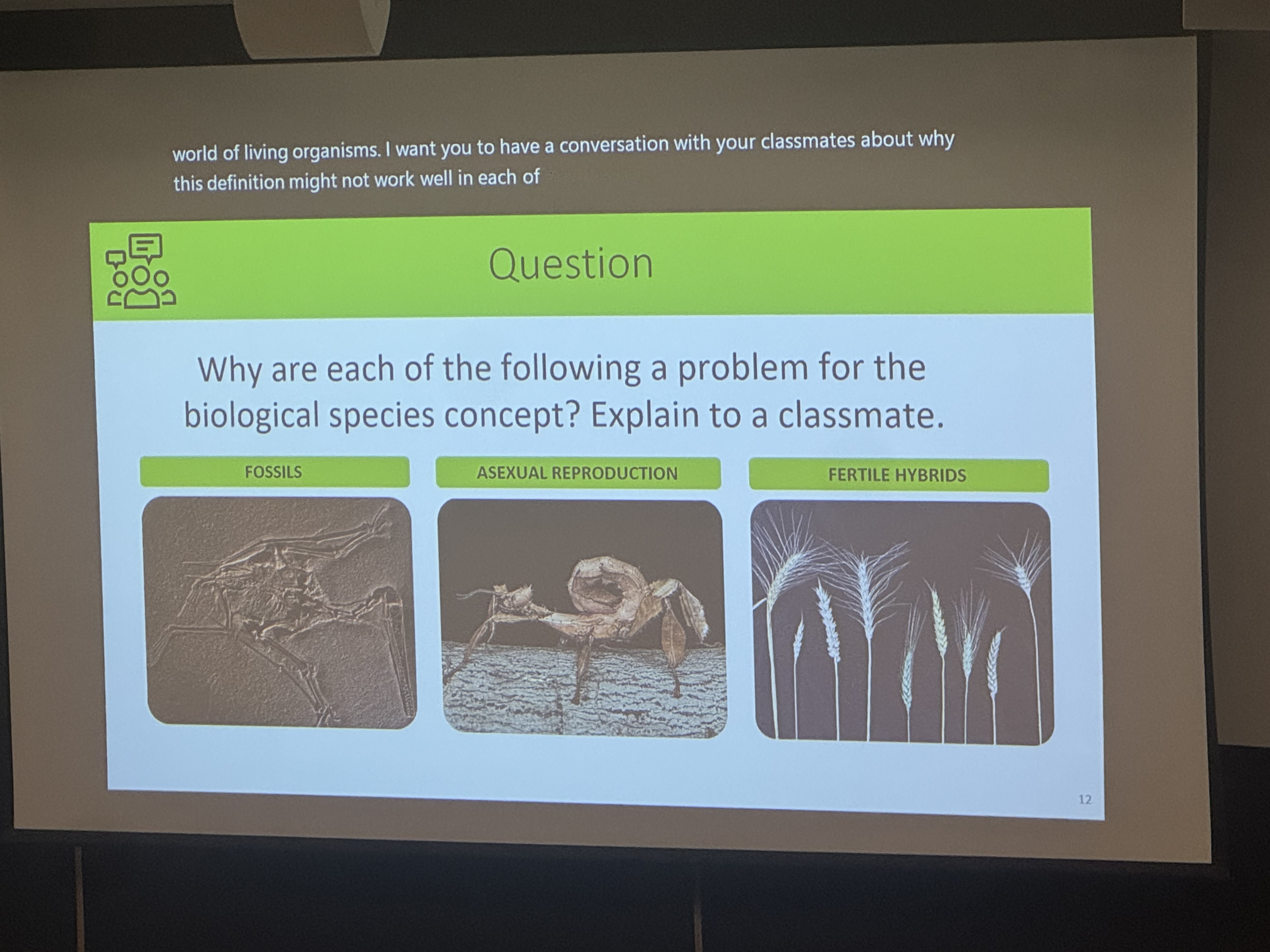
practice Q
hybrid shouldn’t exist bc it states that it’s infertile offspring
asexual don’t interbreed
can’t interbreed fossil
morphological species
species share a common set of physical characteristics (structures)
problem w concept
cryptic species: species differs in traits
phenotypic plasticity; morphology changes with the environment
polymorphic species; genetic variation in morphology in a species
subjective traits; disagreement on characteristics of species (fossil identification)
phylogenetic species
species are the smallest monophyletic groups on the tree of life.
monophyletic; groups including a most recent common ancestor and all of its descendants.
problem; takes time / energy to make trees → not practical; massively increase implications that species are lumped together
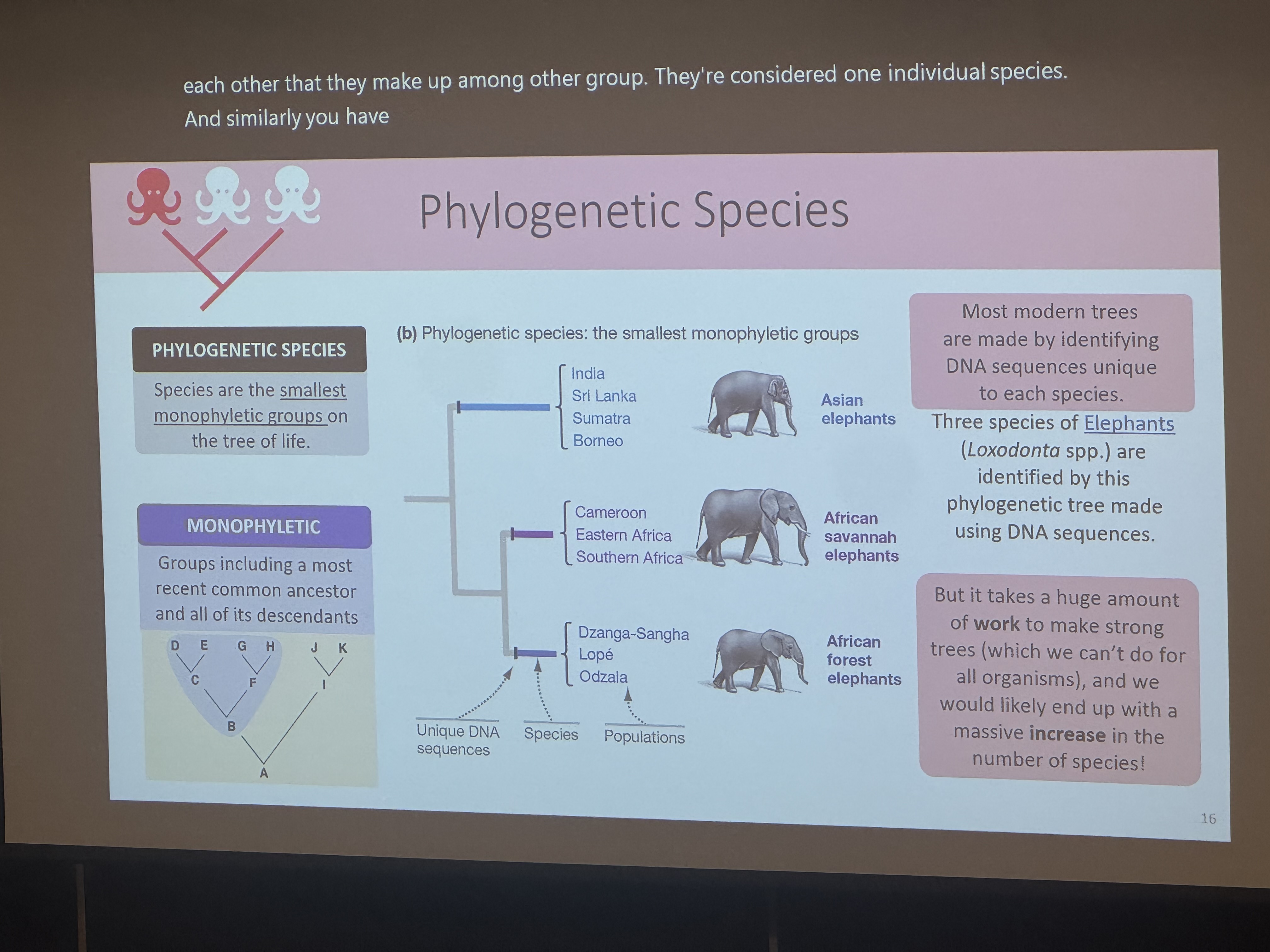
ecological species
species share a common set of ecological characteristics
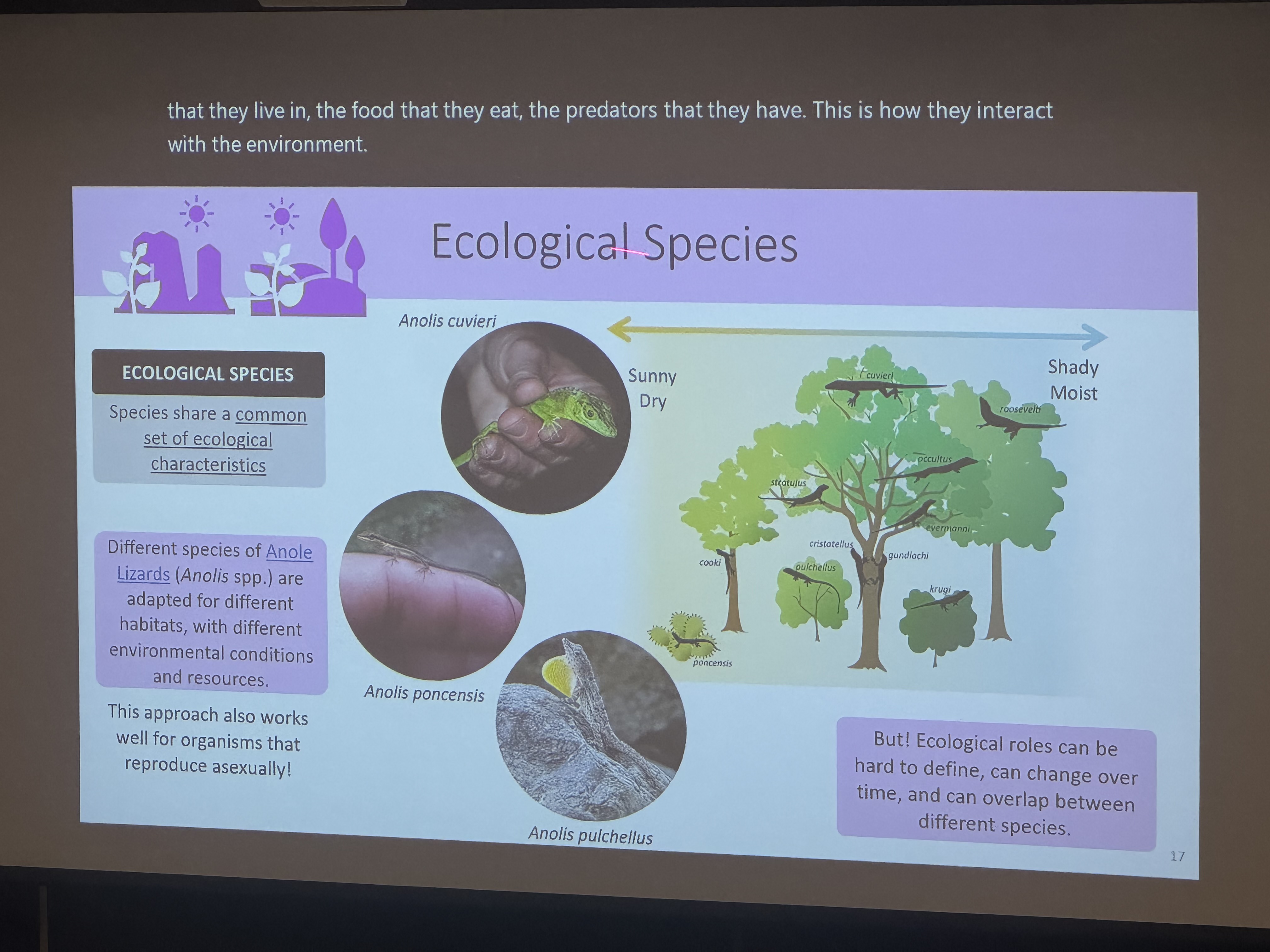
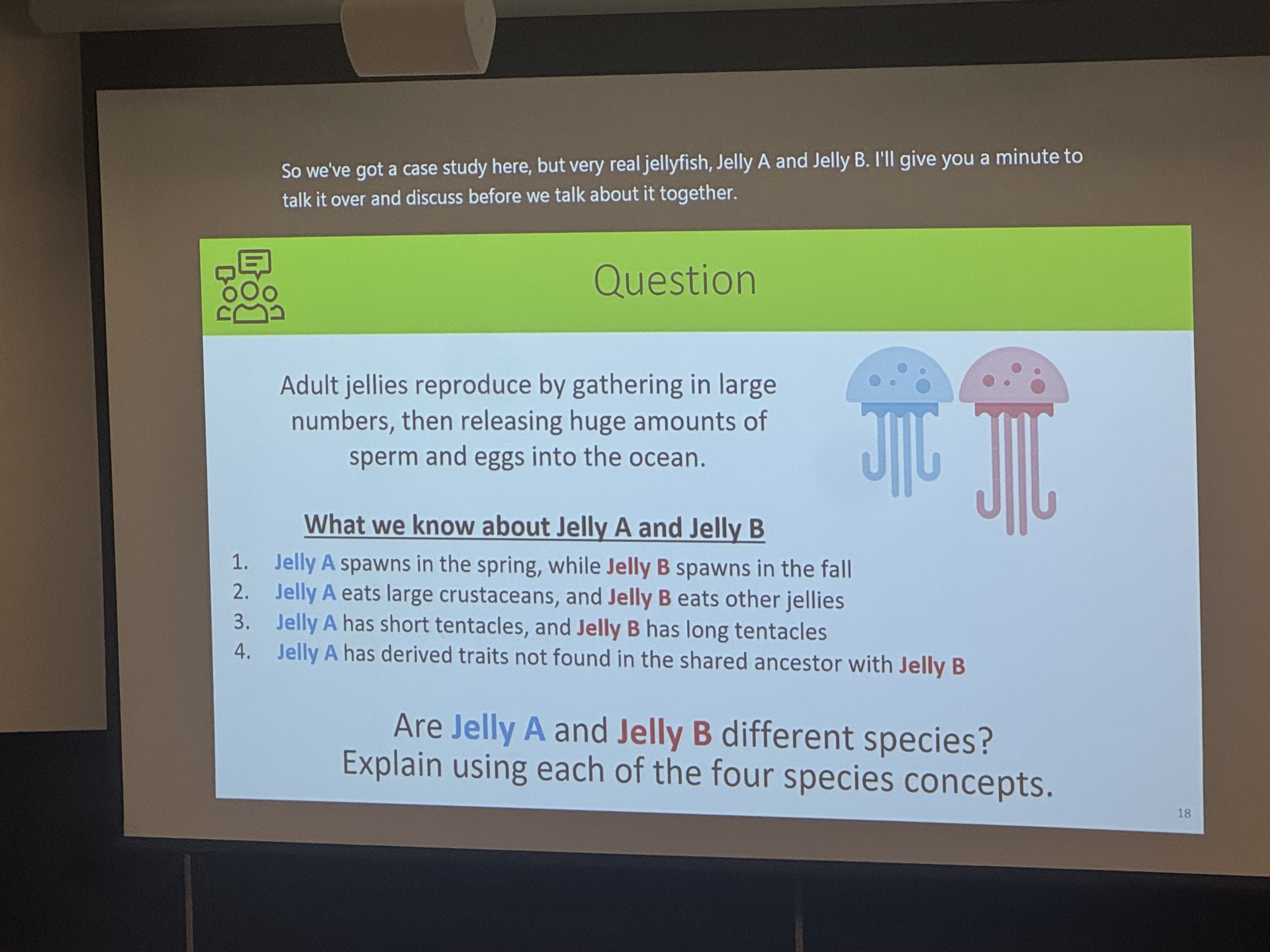
Practice Q 4 diff species
pre-zygotic barrier + temporal in 1 → reproductive isolation
ecological species 2: diff environment / diet sources of food → diff ecological roles
3 morphological difference bc longer tentacles and longer tentacles
4 phylogenetic species concept (derived traits differ)
sub species
a population with distinctive traits and some genetic differences to other populations of the same species, but not distinct enough to be named a diff species.
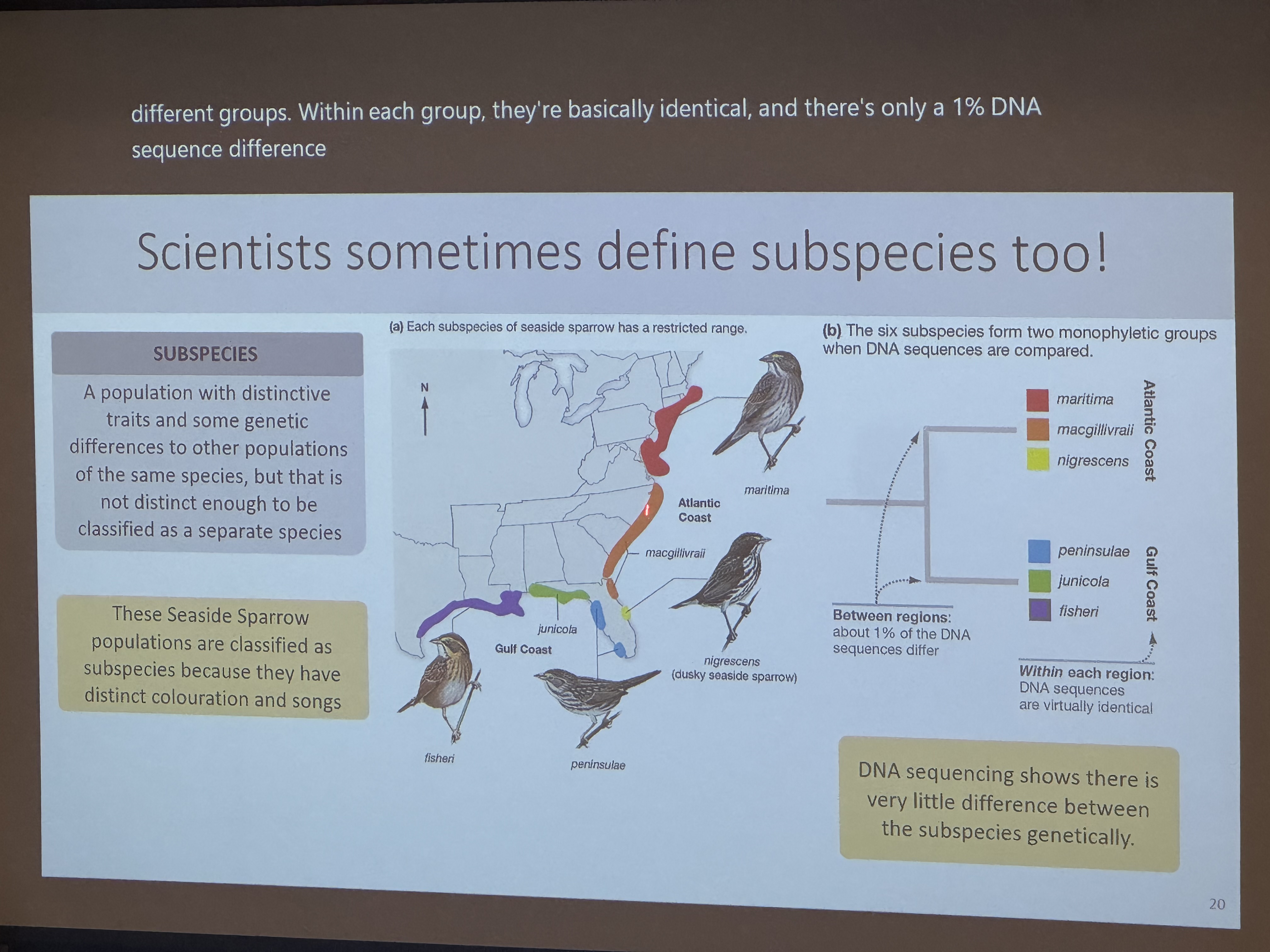
speciation
the evolution of two or more distinct species from a single ancestral species
allopatric speciation
a species is split into two geographical groups, divided by a barrier. Two groups diverge over time to become two species
allo = other
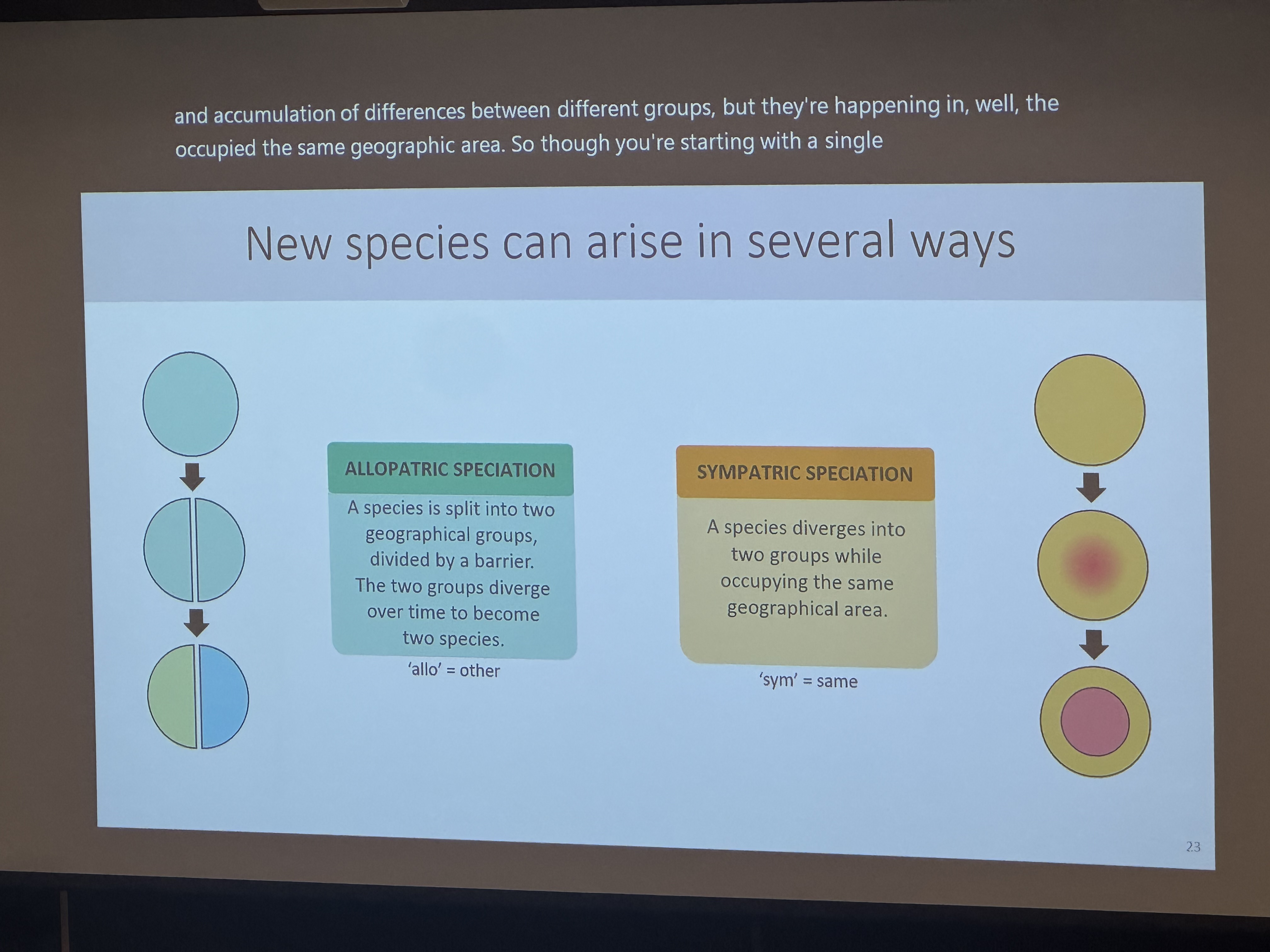
sympatric selection
a species diverges into two groups while occupying the same geographical area.
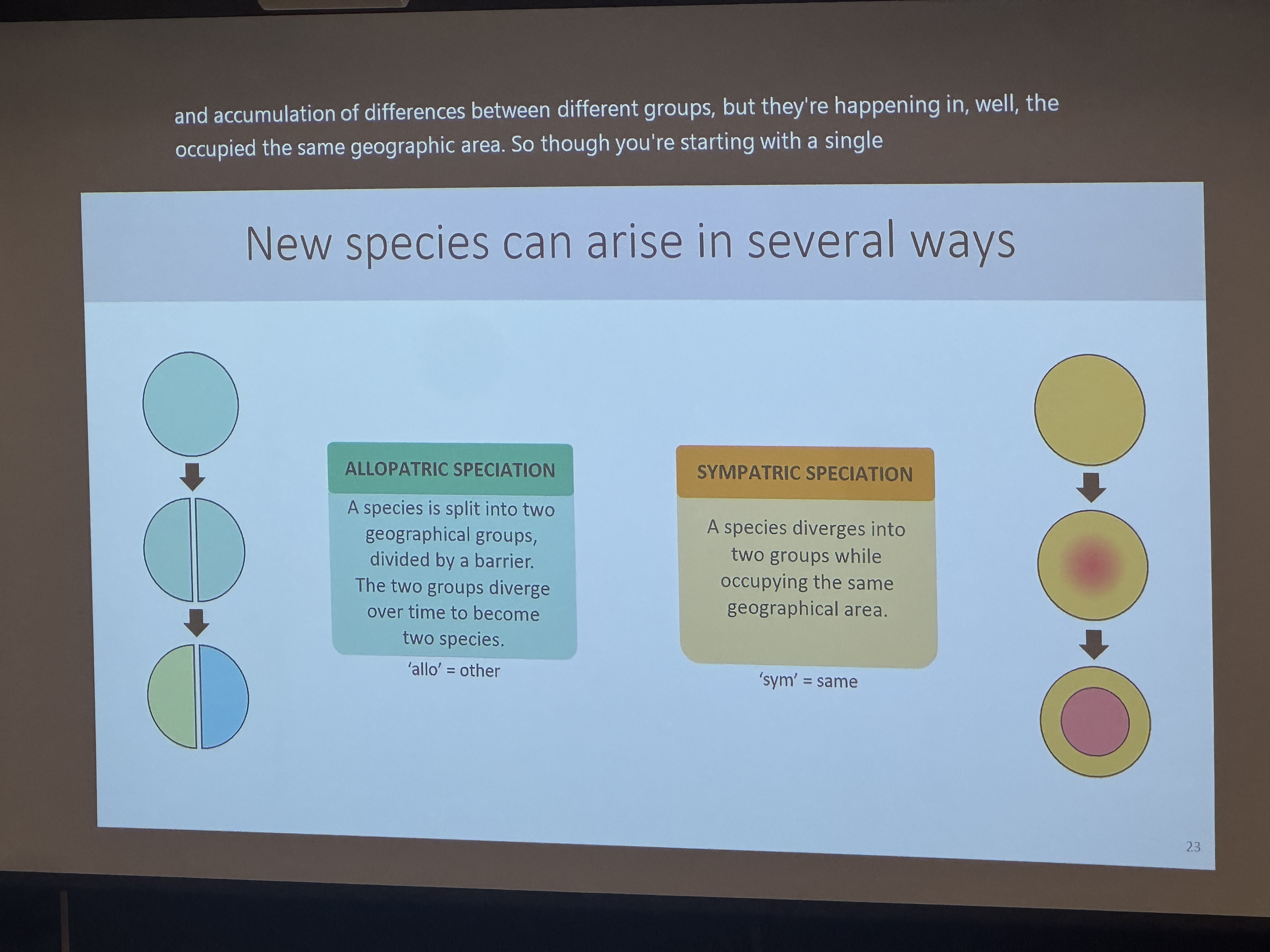
dispersal
when individuals move from their place of origin to a new location
(allopatric selection)
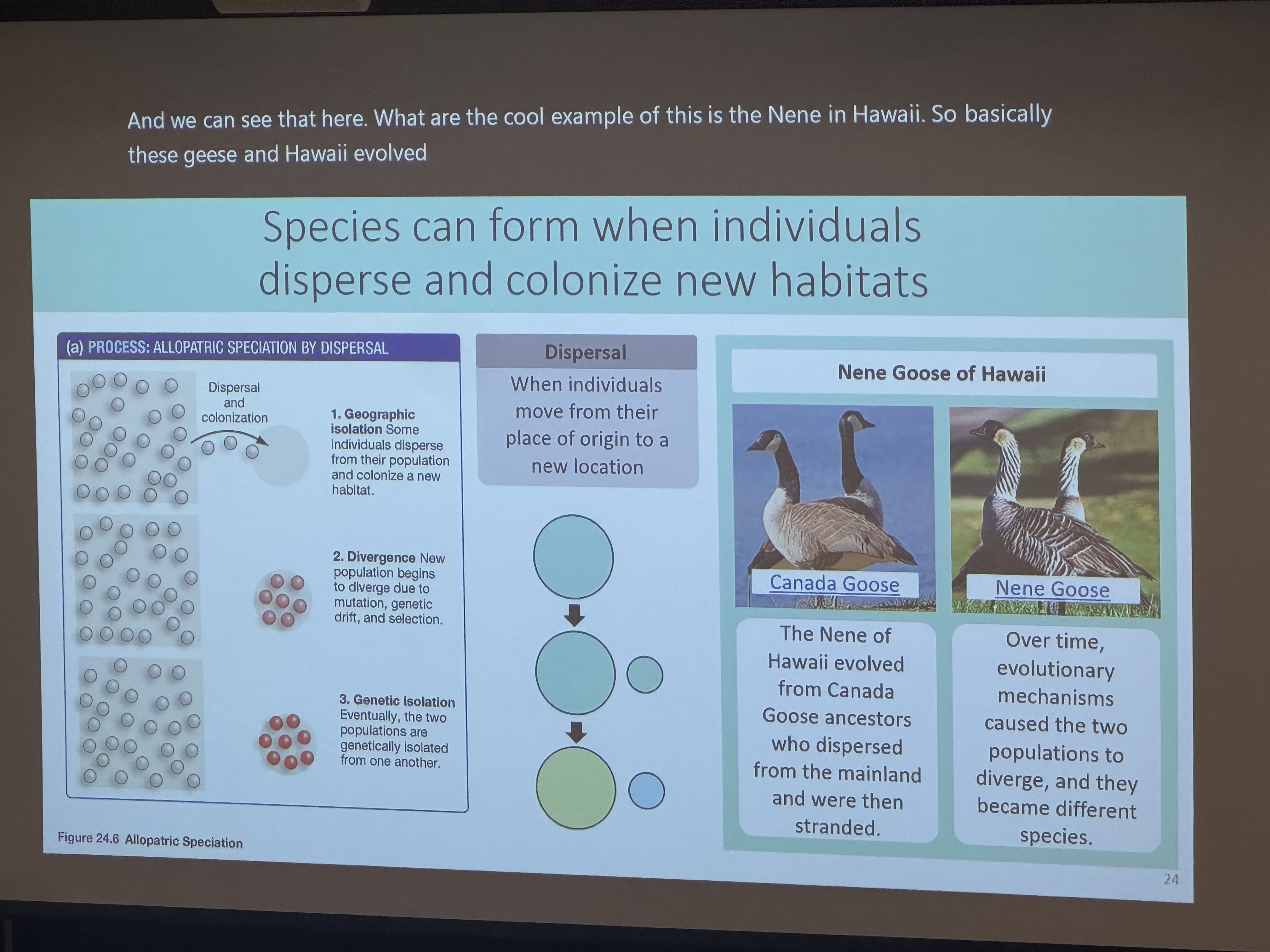
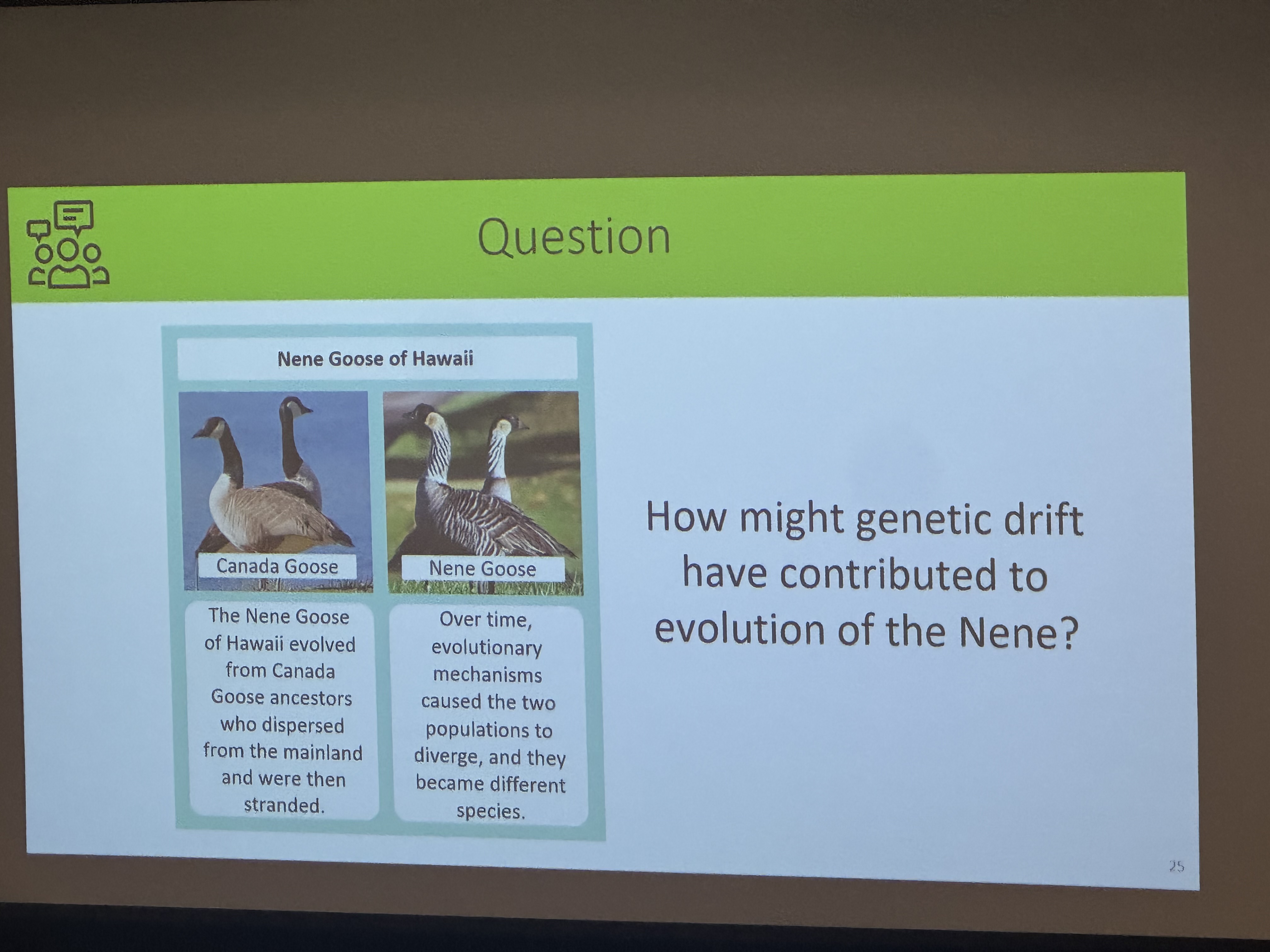
Practice Q
two key things :
founder effect
smaller population side
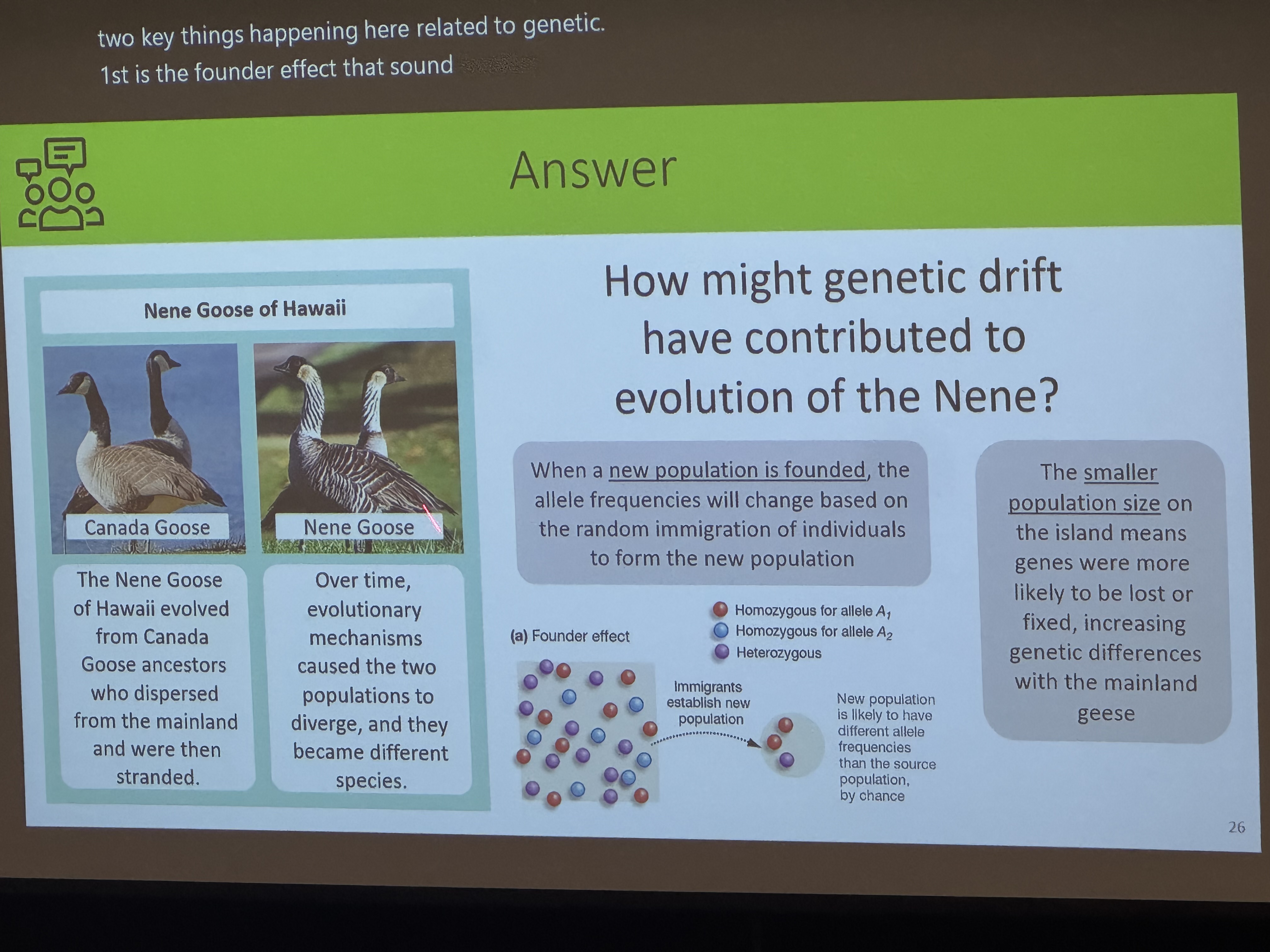
vicariance
(allopatric selection)
a population is split into smaller, isolated populations by a geographic barrier.
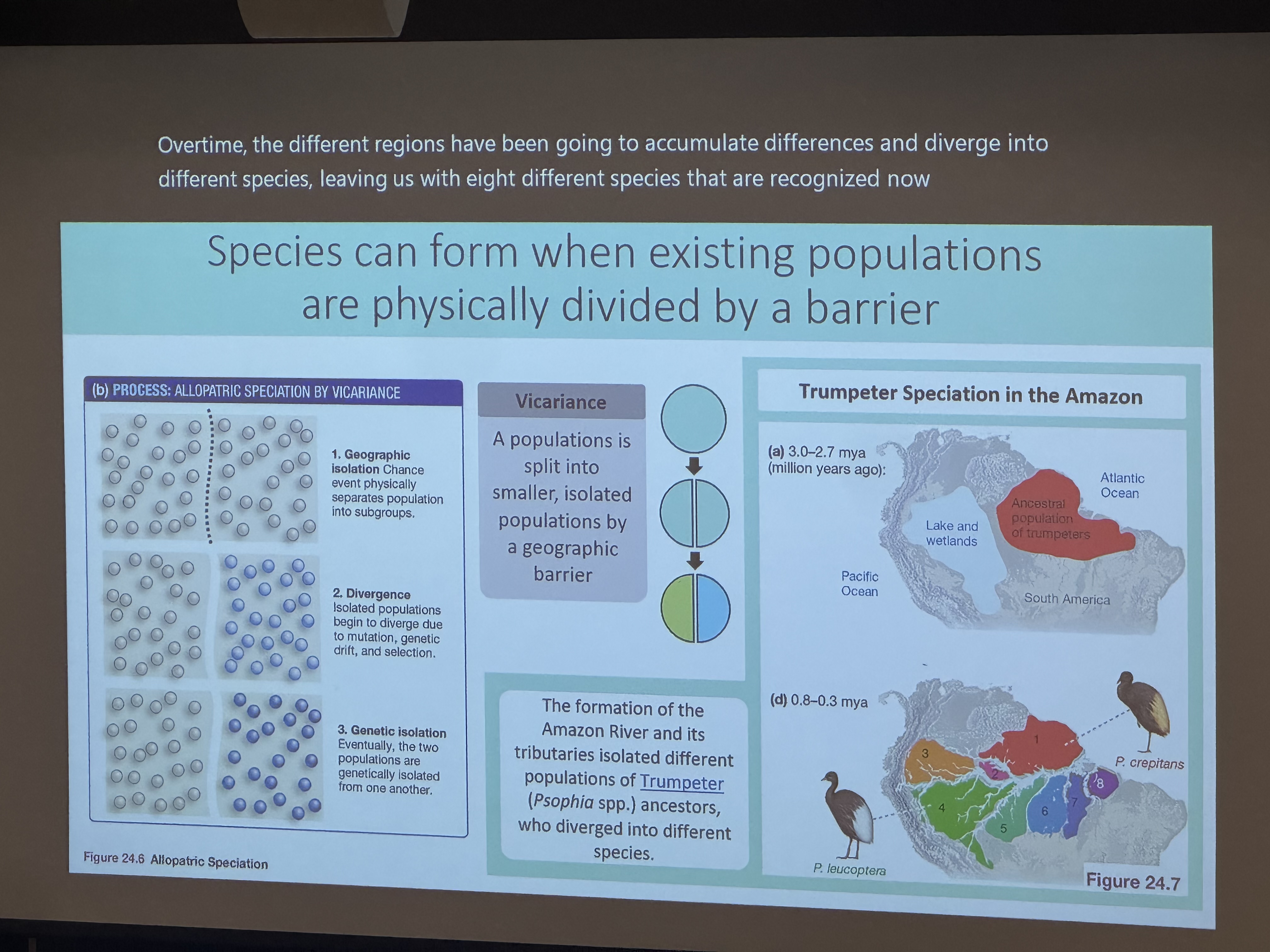
____ selection drives ____ isolation is an example of ______
(sympatric selection)
disruptive selection drives reproductive isolation
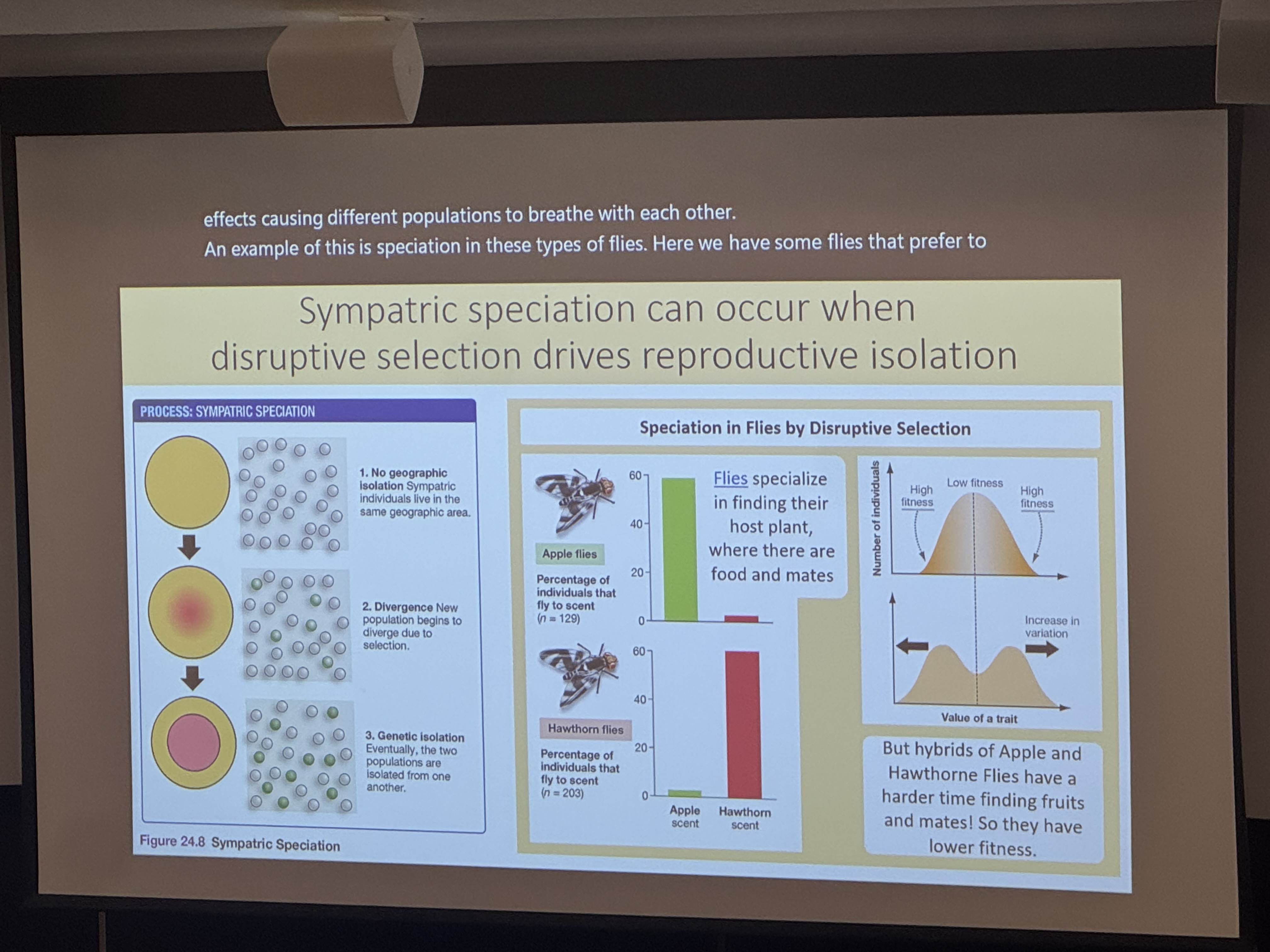
Mutations in genome duplication
(sympatric selection)
an error in meiosis produces a diploid gamete + offspring with a duplicated genome 2n → 4n
isolation occurs bc tetraploid and diploid crosses to produce infertile triploid
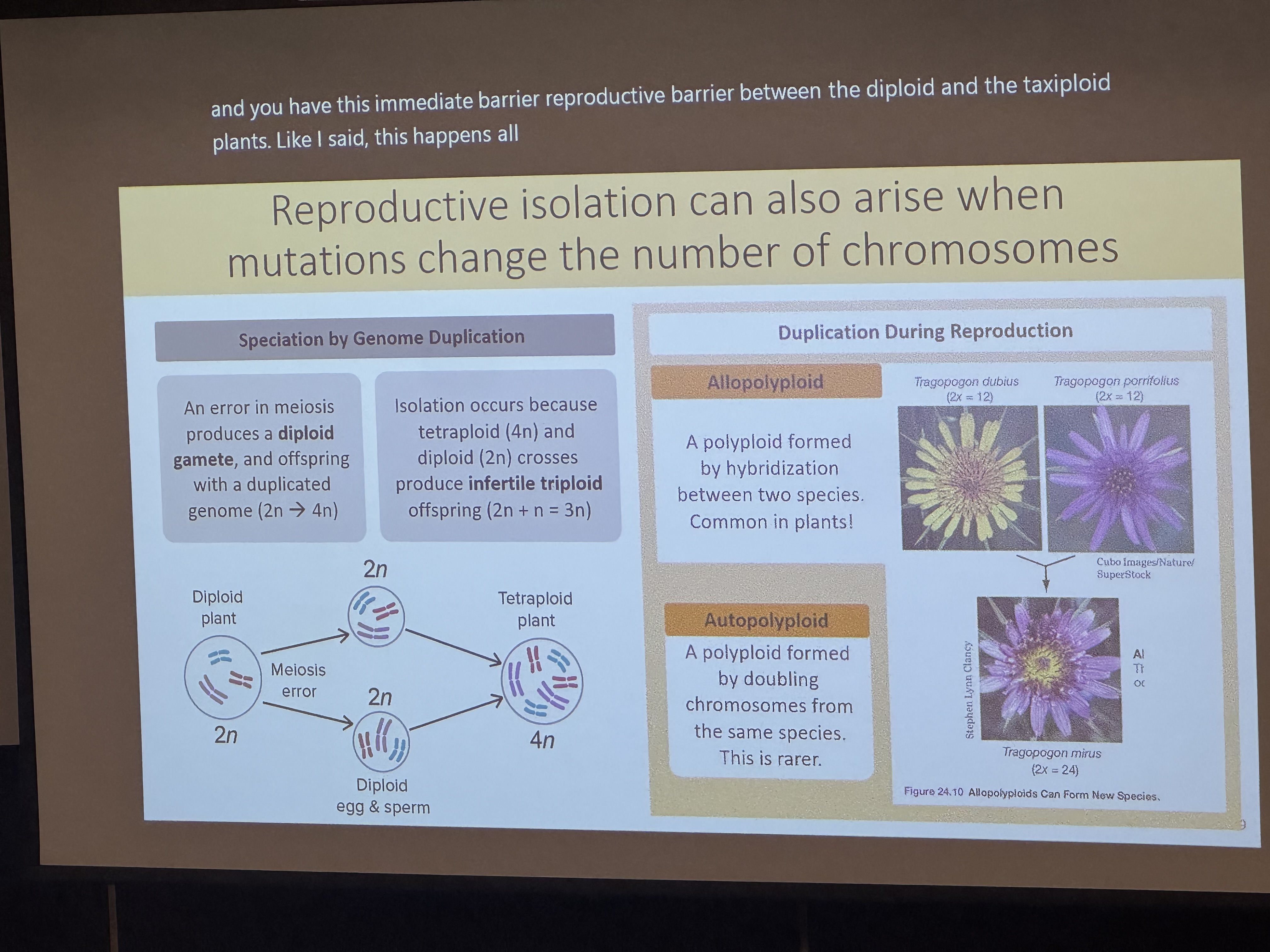
Allopolyploid
a polyploid formed by hybridization between two species; common in plants
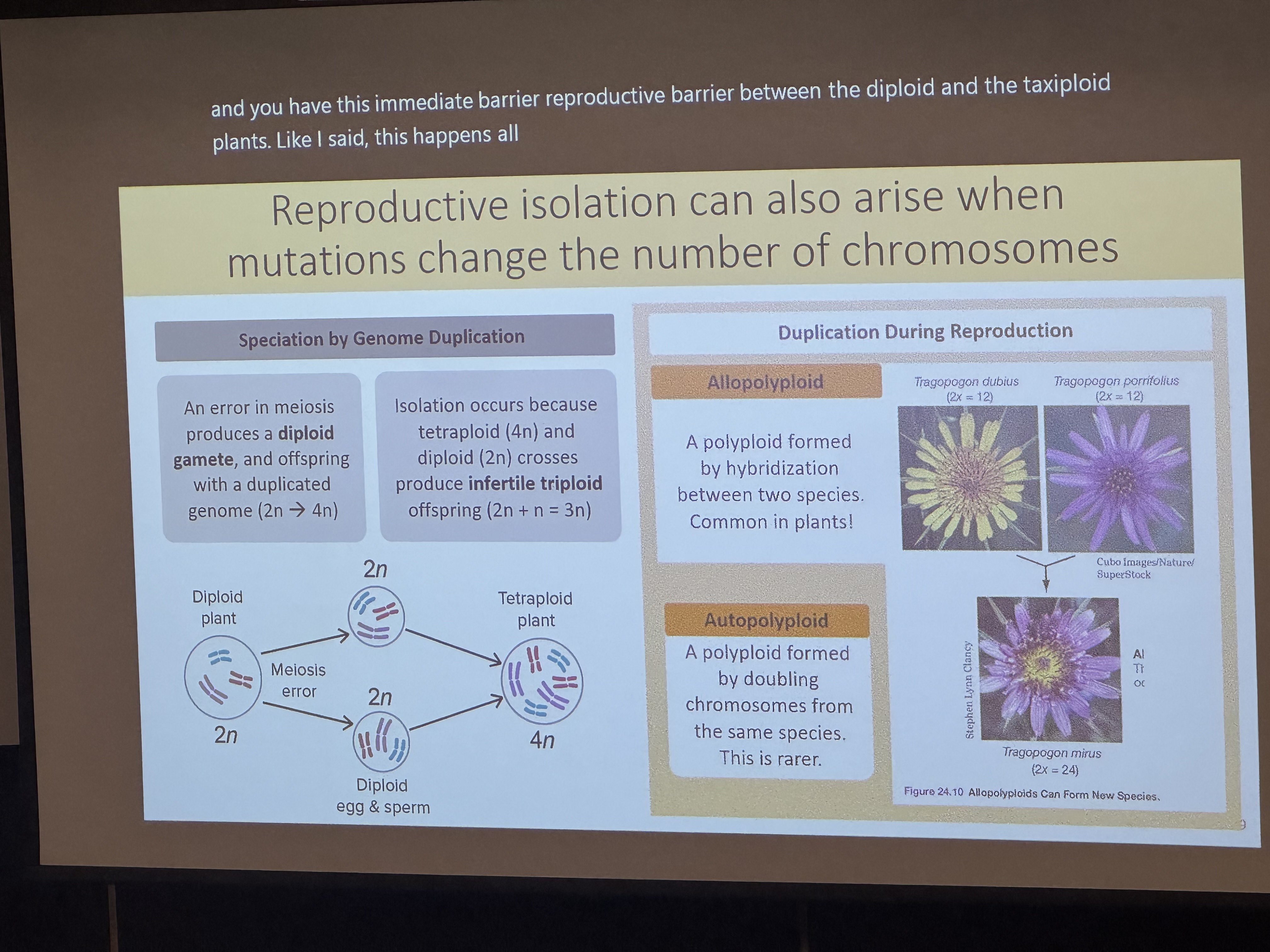
autopolyploid
a polyploid form by doubling chromosomes from the same species; rarer

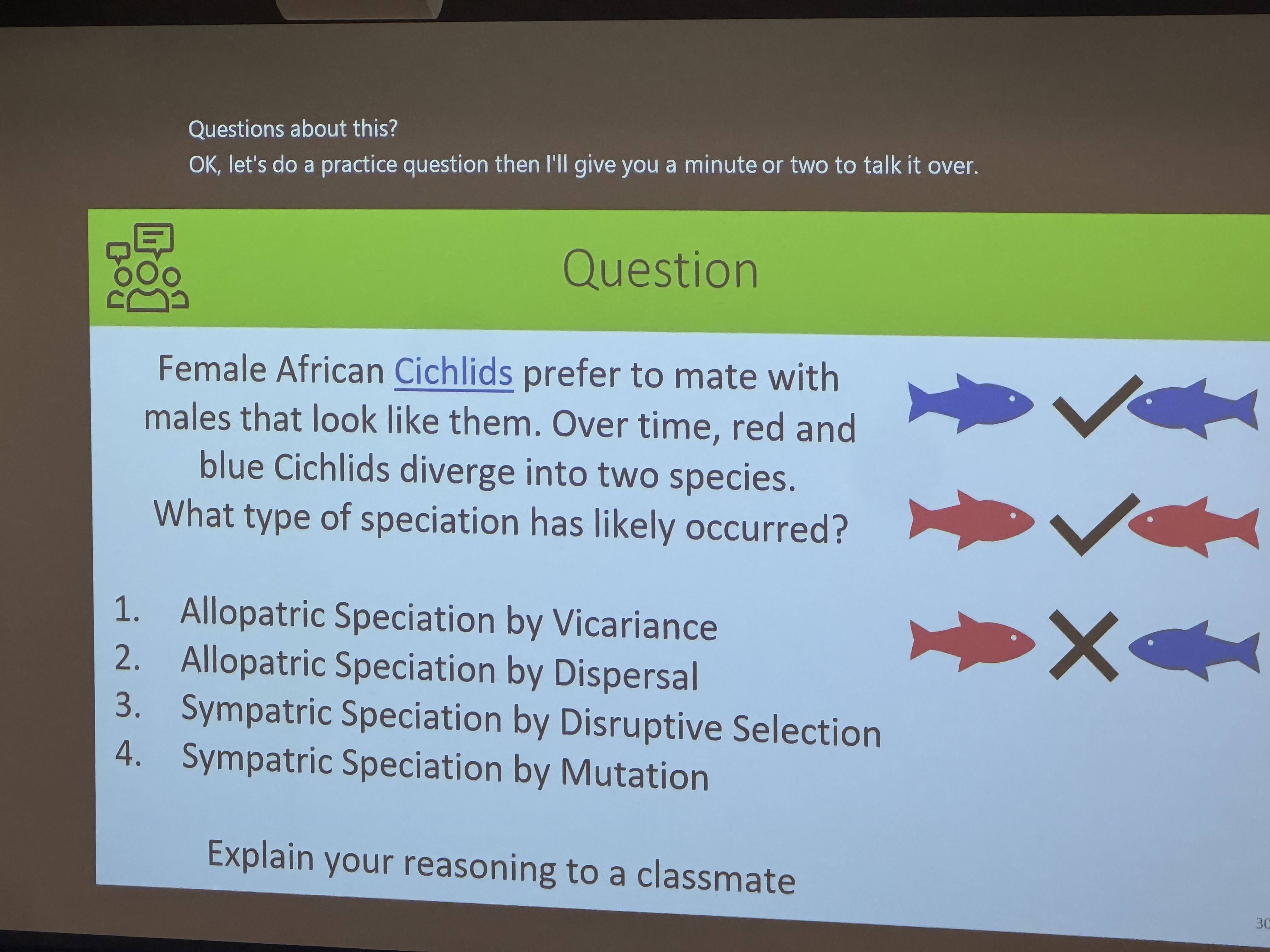
Practice Q
3; disruptive; phenotypes of both extremes provide a fitness benefit so intermediate phenotypes become less common.
adaptive radiation
rapid evolutionary diversification in a single lineage, producing many descendant species with a wide range of adaptive forms.
ecological opportunities
innovation of new trait
ecological opportunities
adaptive radiation
the environment changes w/ new resources/habitat
→ reduced comp or predation
innovation of a new trait
adaptive radiation
a significant new morphological, physiological, or behaviour trait arises.
what are some sings of adaptive radiation
monophyletic group
rapid speciation
ecological diversification into many niches.
adaptive radiation in mammals
evolution of dentition ( evolution of teeth allowed for dietary diversification )
rise of flowering plants ( evolution of angiosperms provided food )
extinction of the dinosaurs ( extinctions of dinosaurs reduced predation pressure )
variety of derived traits
bipedalism
large brain
bipedalism
variety of derived traits
walking on two legs (freed up the arms) for tool-use / carrying items + use hands to communicate
Large brain
variety of derived traits
associated with increased cognitive abilities and social complexity, enabling problem-solving and advanced communication.
(humans)
Homo sapiens had biggest
Tool use
variety of derived traits
Hominins use tools to collect food and fuel, build shelter, + extracting resources more efficiently.
reduced jaw muscle size
variety of derived traits
cooking food before eating make it softer, and therefore less chewing is needed.
massive jaw muscles no longer required in later homo species
language
variety of derived traits
evolution of communication helped humans live productively to convey info abt danger and coordinate communities.
hominins
refers to the group of species that includes modern humans and our closest ancestral relatives, characterized by traits such as bipedalism and increased brain size and other derived traits
Genetic variation in human skin colour due to?
due to BALANCING SELECTION
nearer the equator = more UV radiation, More folate degradation, and more vitamin D synthesis (darker skin)
nearer the poles = less UV radiation, less folate degradation, and less vitamin D synthesis (lighter skin)
Ecology
the relationships between organisms and their environments.
environment: abiotic and biotic activities (interaction)
biotic environment: living things an organism interacts with
abiotic environment: non-living things an organism interacts with
biotic environment examples
eating fruits/food'/other animals
abiotic environment examples
temperature, water, soil, air
(shelter) → creating burrows
different scales of ecology
organismal ecology
population ecology
community ecology
ecosystem ecology
landscape ecology
global ecology
organismal ecology
studies how certain individuals adapt to line in a particular environment;
ex: salmon hatch in river streams then live out their entire life in the ocean → breed at the rivers again
population ecology
studies groups of individuals of the SAME SPECIES and the factors affecting their population size and distribution.
population
group of individuals of the same species living in the same geographic area at the same time
community ecology
studies ALL populations of species in an area and how they INTERACT with each other in a certain way.
predators vs. prey
community
all the populations of different species that interact with each other in a certain area
ecosystem ecology
studies ALL biological communities in an area and their ABIOTIC environment (non-living)
after spawning salmon die which contributes to nutrients in the river for other organisms
ecosystem
a community and its physical environment
landscape ecology
studies how multiple ecosystems interact by exchanging energy, nutrients, and organisms.
landscape
a region composed of multiple ecosystems that interact with each other.
global ecology
studies the relationship among organisms and their environments at a GLOBAL SCALE
climate change → water levels
behavioural ecology
studies behavioural adaptations that evolved bc of ecological selection pressures
organismal ecology
focuses on the physiological and behavioral adaptations of individual organisms in their environments.
evolved in response to ecological selection pressures
behaviour
action by an organism
brainstorm a few examples of behaviours that might provide evolutionary example
-hibernation
-migration
-
proximate cause
how behaviour works; biological mechanisms that lead to the behaviour.
touching plant pulls open ion channels → leaves close
ultimate cause
why the behaviour exists; the EVOLUTIONARY benefit to survival or reproduction.
the tendril plant closes its leaves to look less appetizing
innate behaviour
behaviour inherited genetically (doesn’t have to be learned) + typical of the species
learned behaviour
an enduring change in an individual’s behaviour resulting from a specific experience.
example of proximate of euglena
proximate: light is detected by photosensitive eyespot → changes in light then triggers motion
ultimate: the ability to find food or optimize energy use for better survival. (photosynthesis)
Examples of learned behaviour crow
drops nuts and shellfish onto roads where passing cars open it
proximate: young crows observe others then do it
ultimate: tool use = food = less effort in using beaks = increases fitness.
behaviours have fitness trade-offs
cabbage butterflies learn which houseplants = best for laying eggs
benefit: increases offspring survival
cost: takes more time/ energy = predation risk
sockeye salmon; hatch in mountain streams then to the ocean where they live most of their life: what’s a possible proximate and ultimate
proximate:
- physiological cues trigger migration
muscles change so salmon can swim back up stream
salmon imprint on the smell to navigate home
ultimate: (evolutionary fitness)
higher oxygen levels to help children survive BUT not many resources thus salmon must move to ocean
types of behaviour
foraging
mate choice
location
communication
optimal foraging
maximizes the amount of usable energy they take in, given the costs of finding and ingesting their food / the risk of being eaten while their at it
trap-lining: visit food sources that regularly have it (like my backyard cuz my grandpa keeps feeding rats to crows)
root foraging: plants increase root growth in nutrient-rich patches of soils
decentralized: exploring many paths to food / creating efficient transport
evolutionary game theory:
a mathematical modelling approach to predicting the outcome of natural selection on behaviours when multiple “players” are interacting
(comp of foraging)
producers vs scroungers
(comp of foraging)
producers are individuals that gather their own resources, while scroungers take advantage of the resources gathered by others. This interaction highlights strategies within foraging behavior.
group vs solo foraging
groups increases success but less food
solo is more dangerous but more food
prey preferences
choosing different prey than other individuals reduces DIRECT COMP for that food
mating behaviours are affected by
sexual selection": type of natural selection that favours individuals with traits that increase their ability to obtain mates or CHOOSE good mates:
how many mates available?
The availability of mates influences competition among individuals, their reproductive strategies, and the overall dynamics of mating systems in a population.
Species can have different mating systems
monogamy: 1 on 1
polygny: male w multiple females
polyandry: females w multiple males
promiscuity: everyone has a lot of partners
mating systems are messy irl
due to factors like environmental variability, social structure, and individual preferences that can complicate mate selection and competition.
like in starling birds monogamous males help w food but polygamous DONT
sometimes female secretly mates with other males